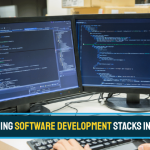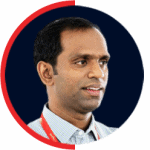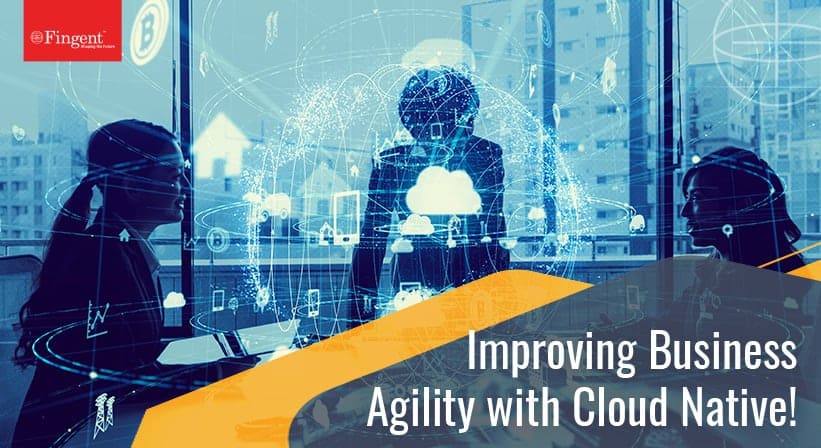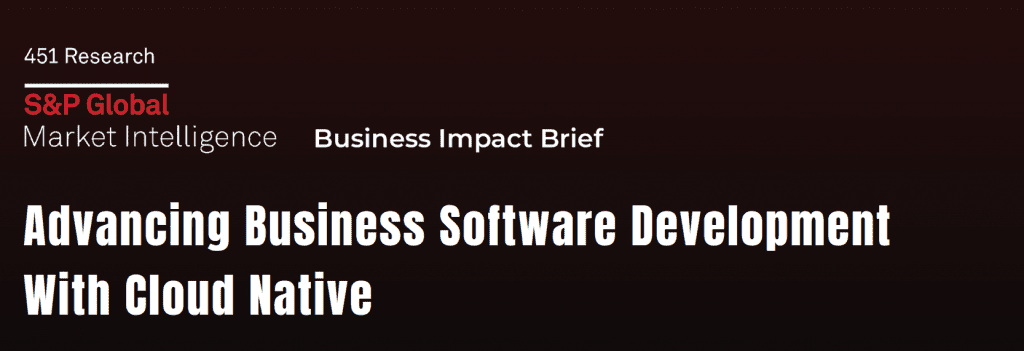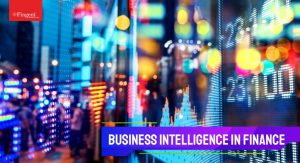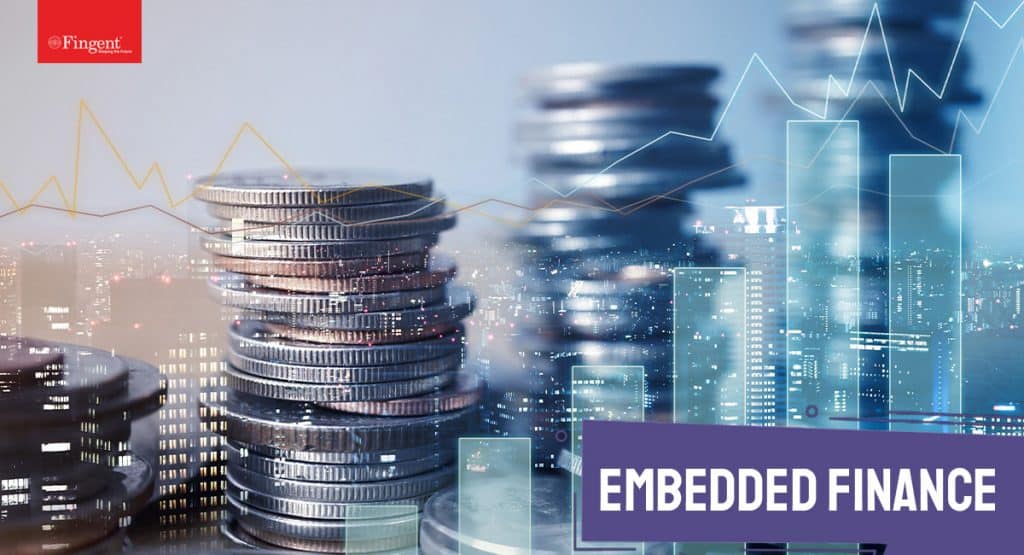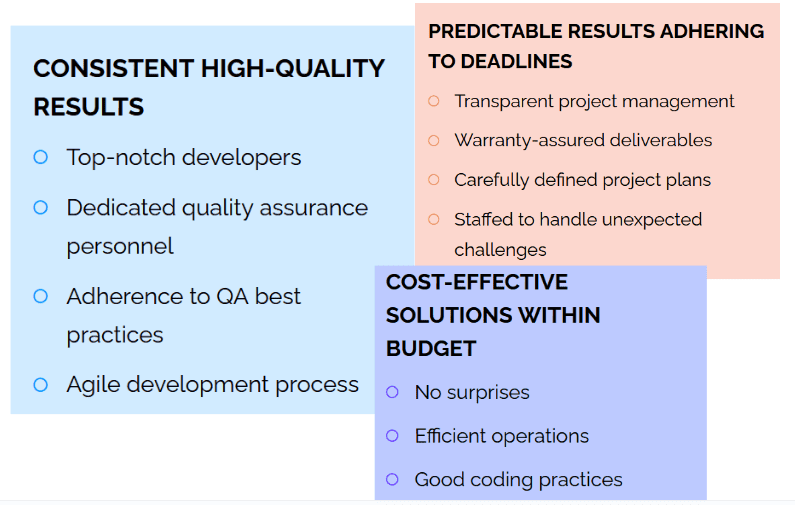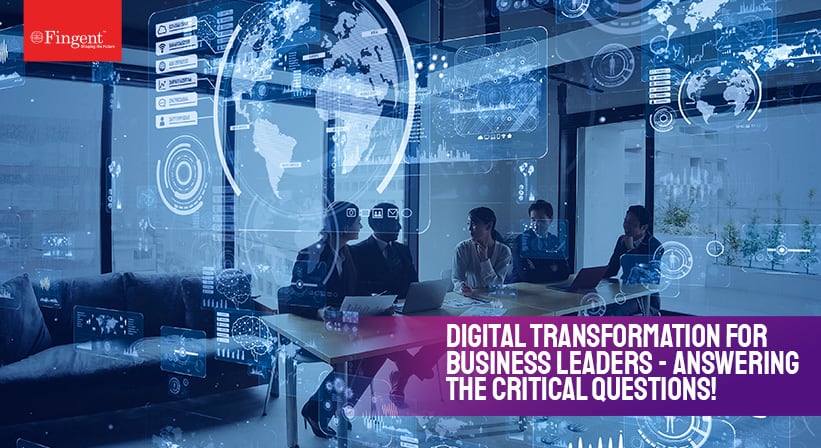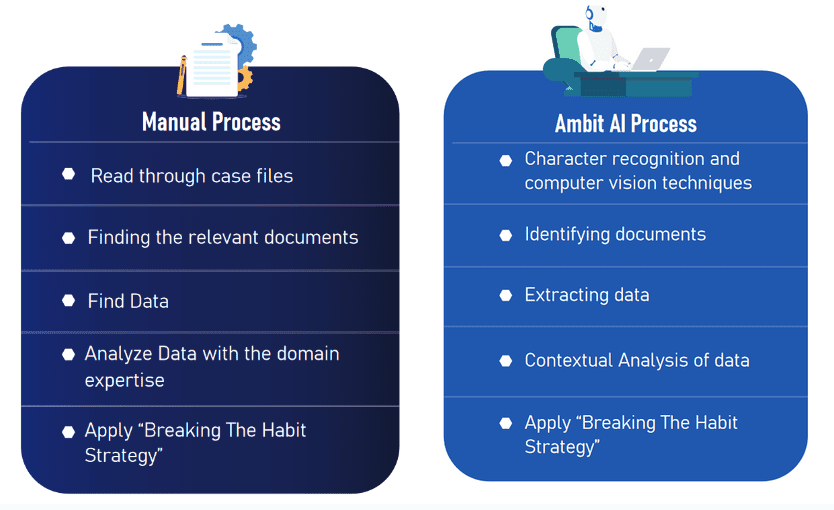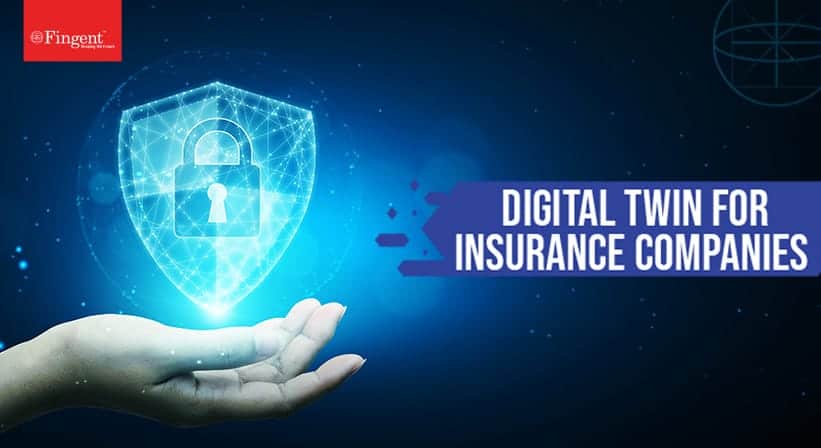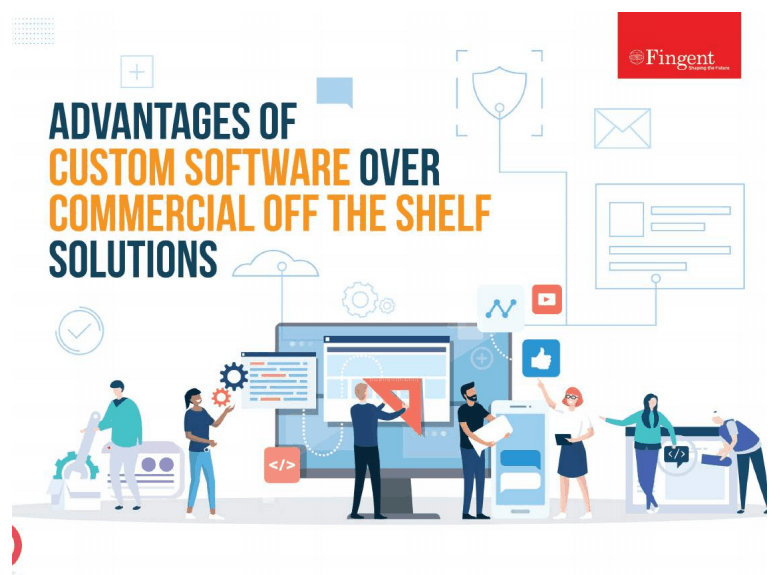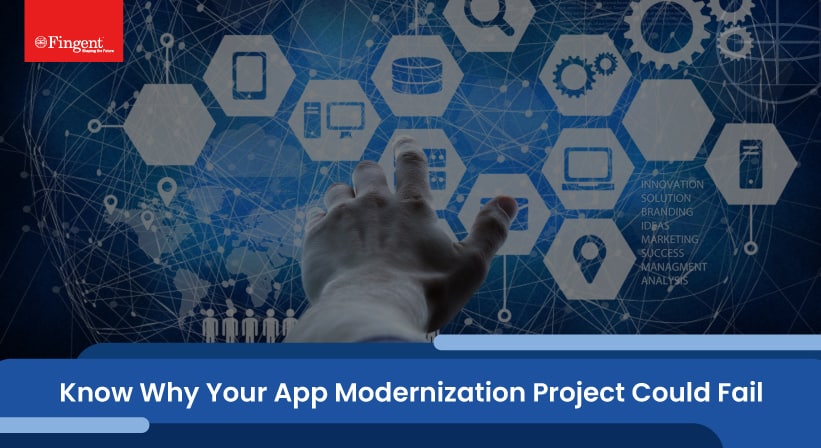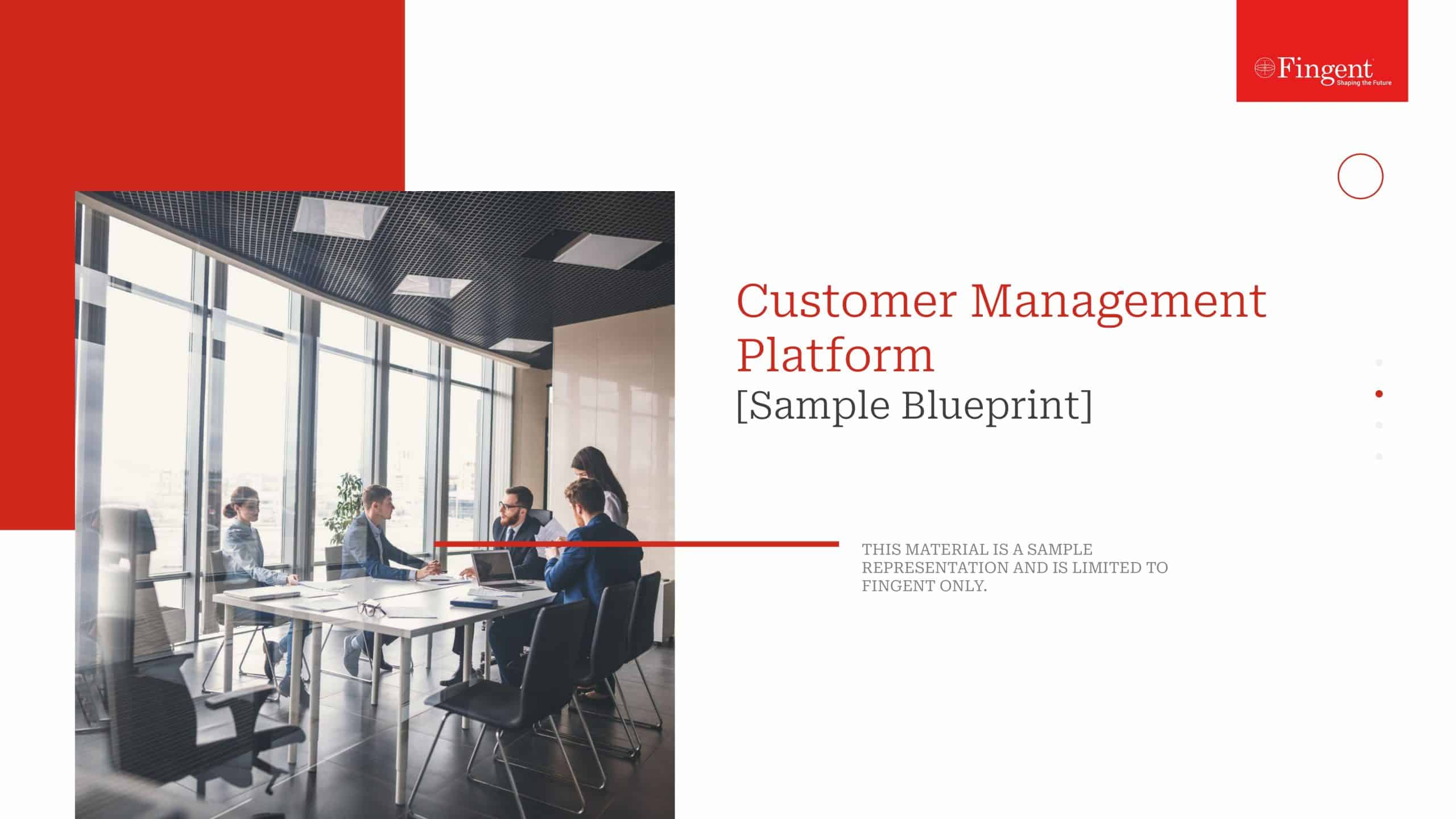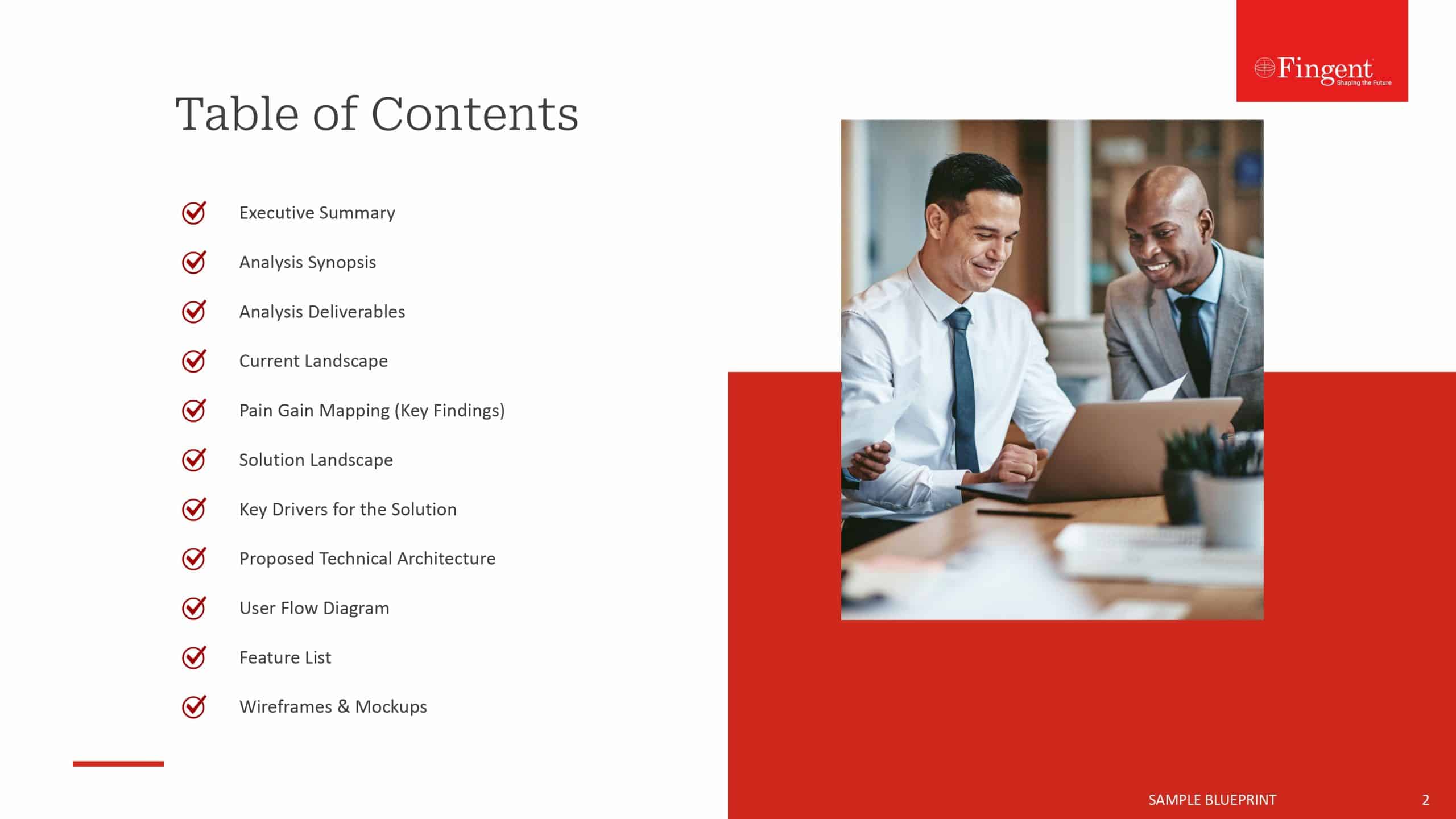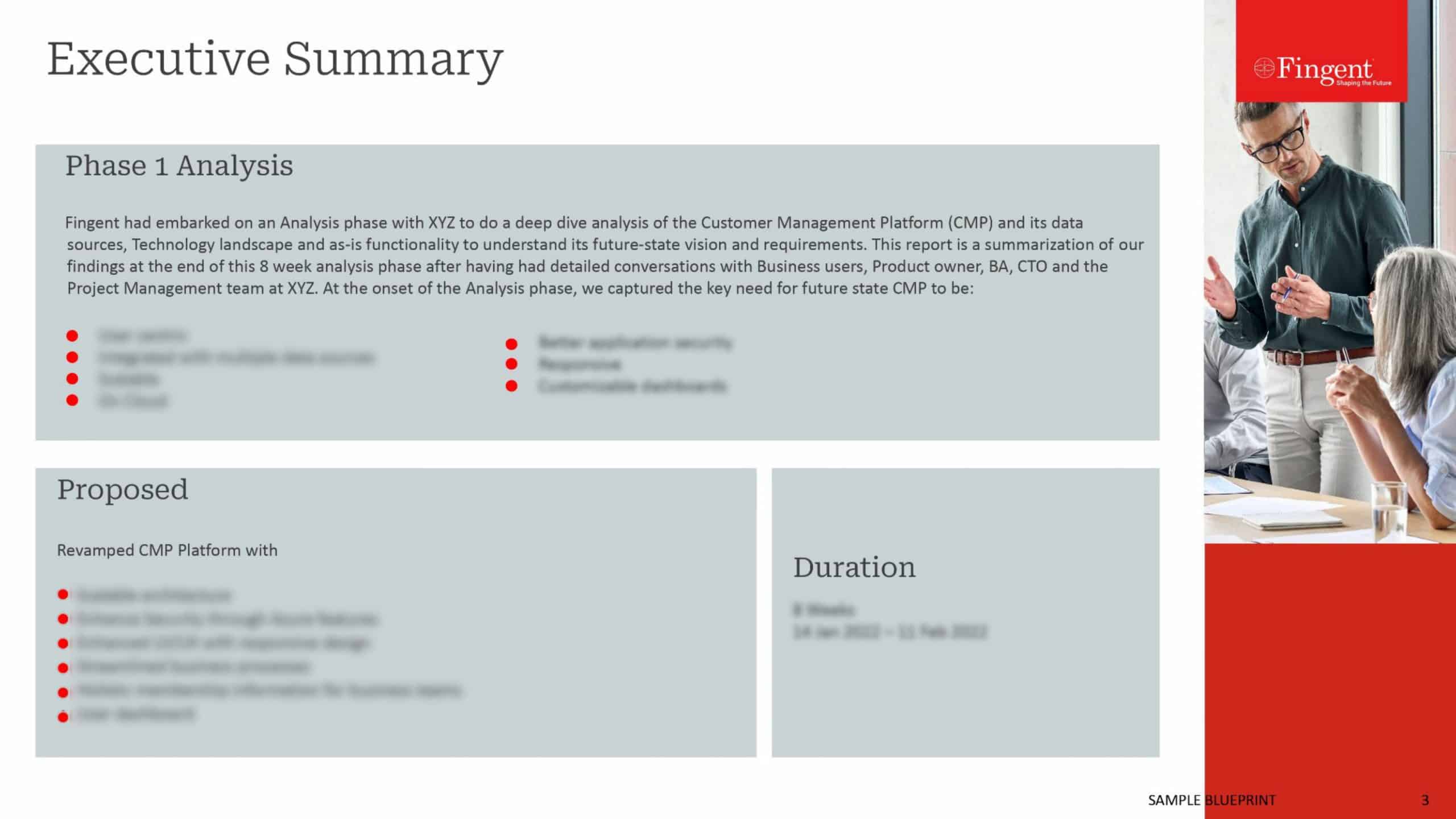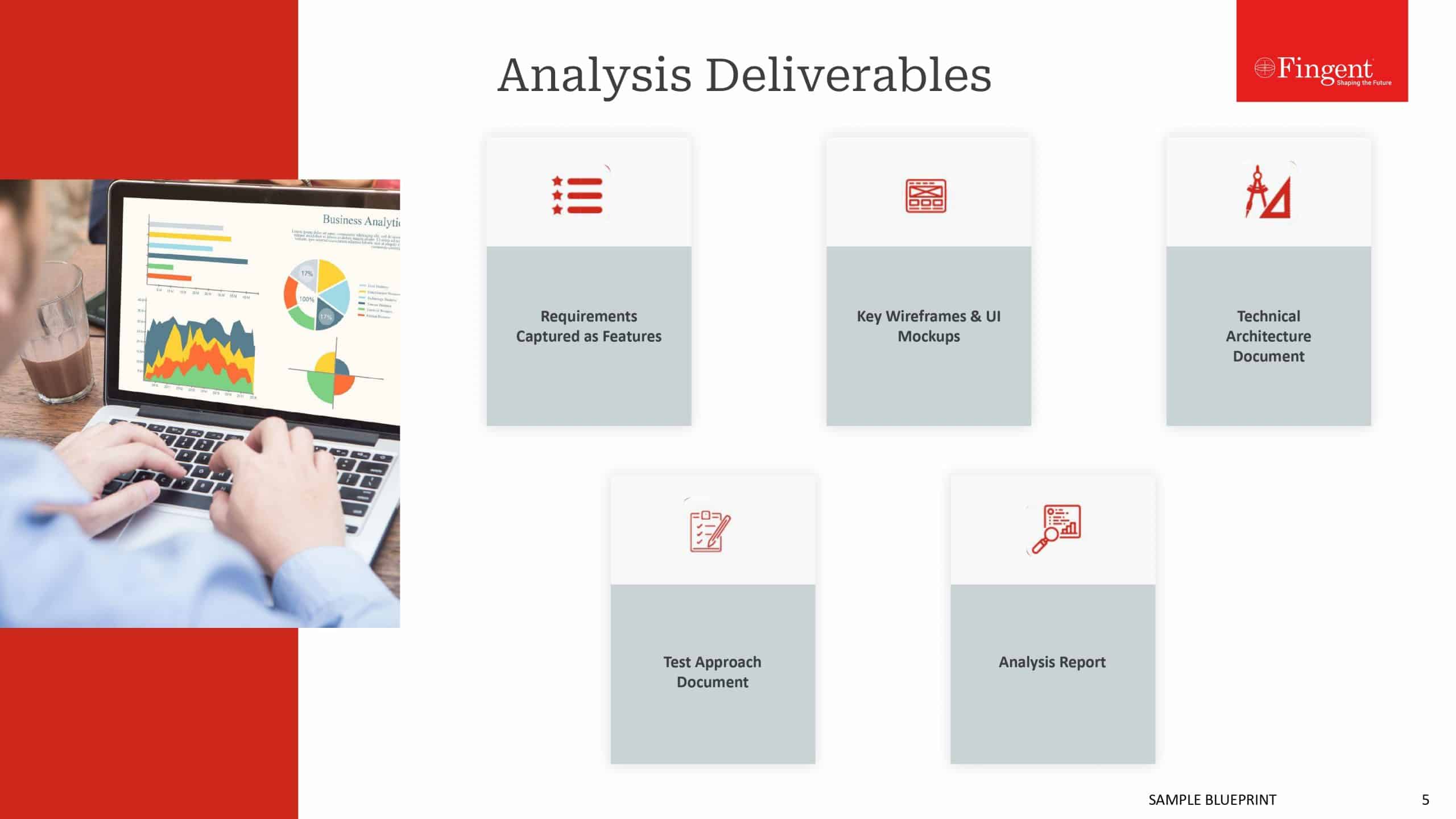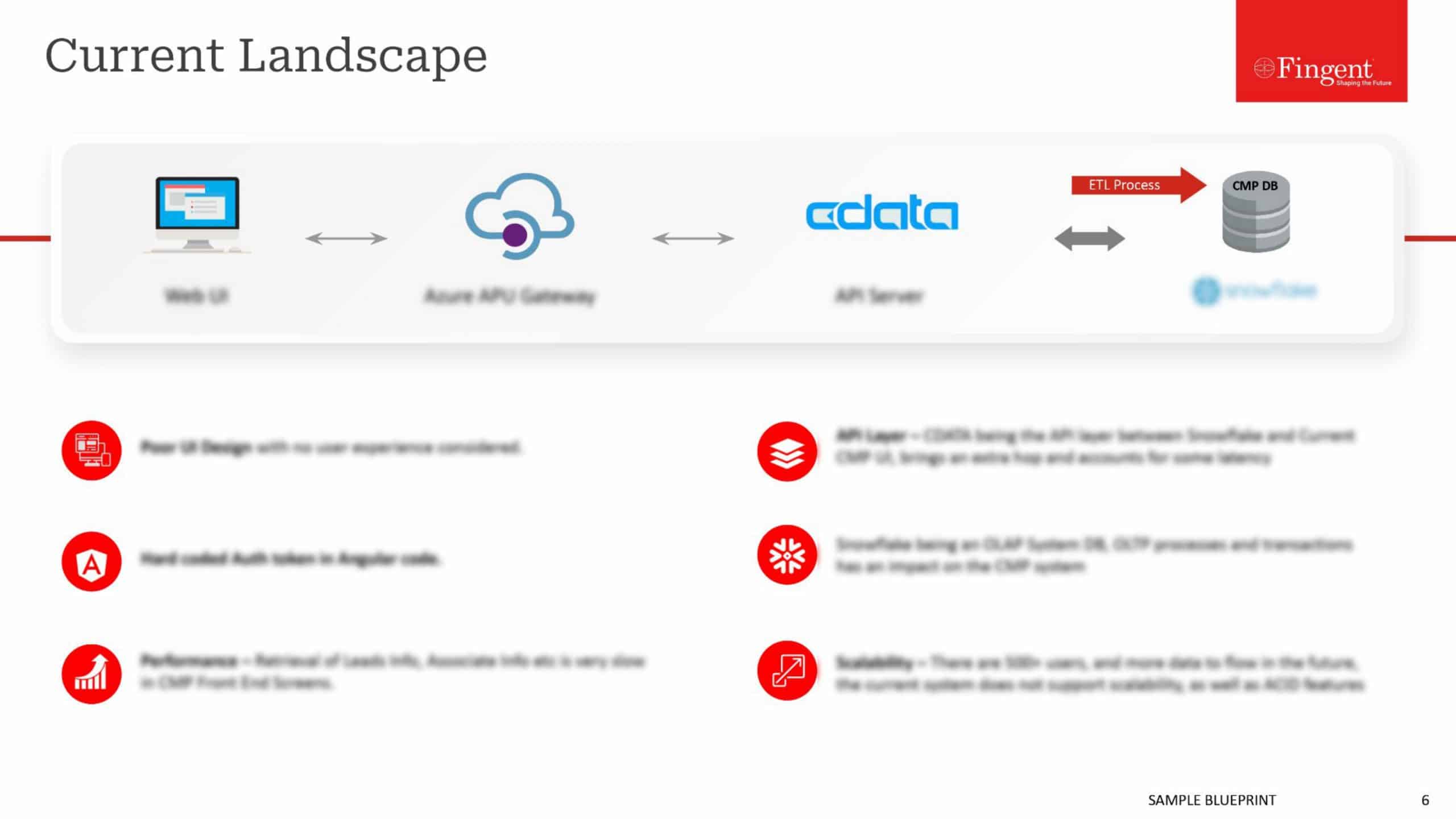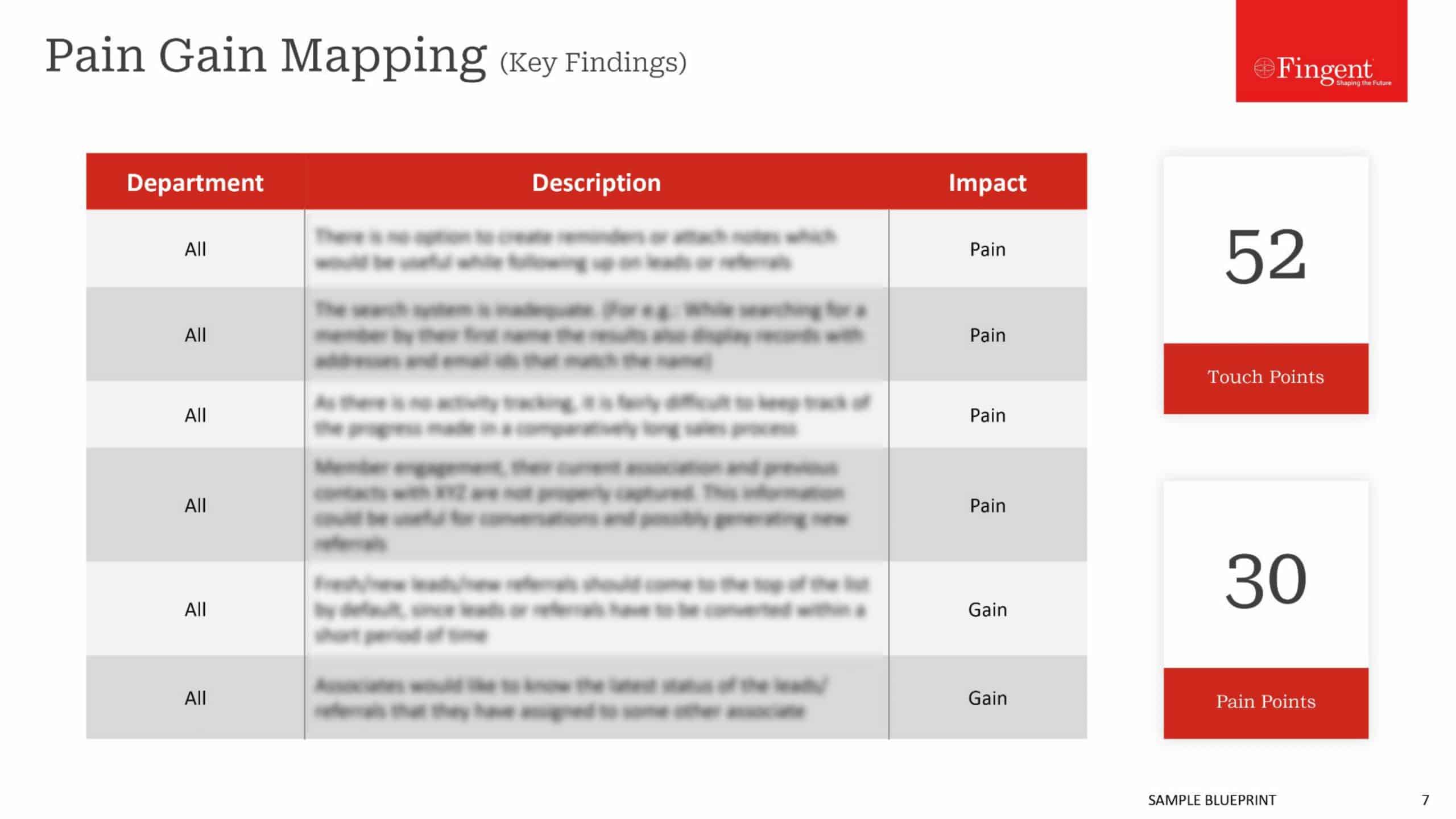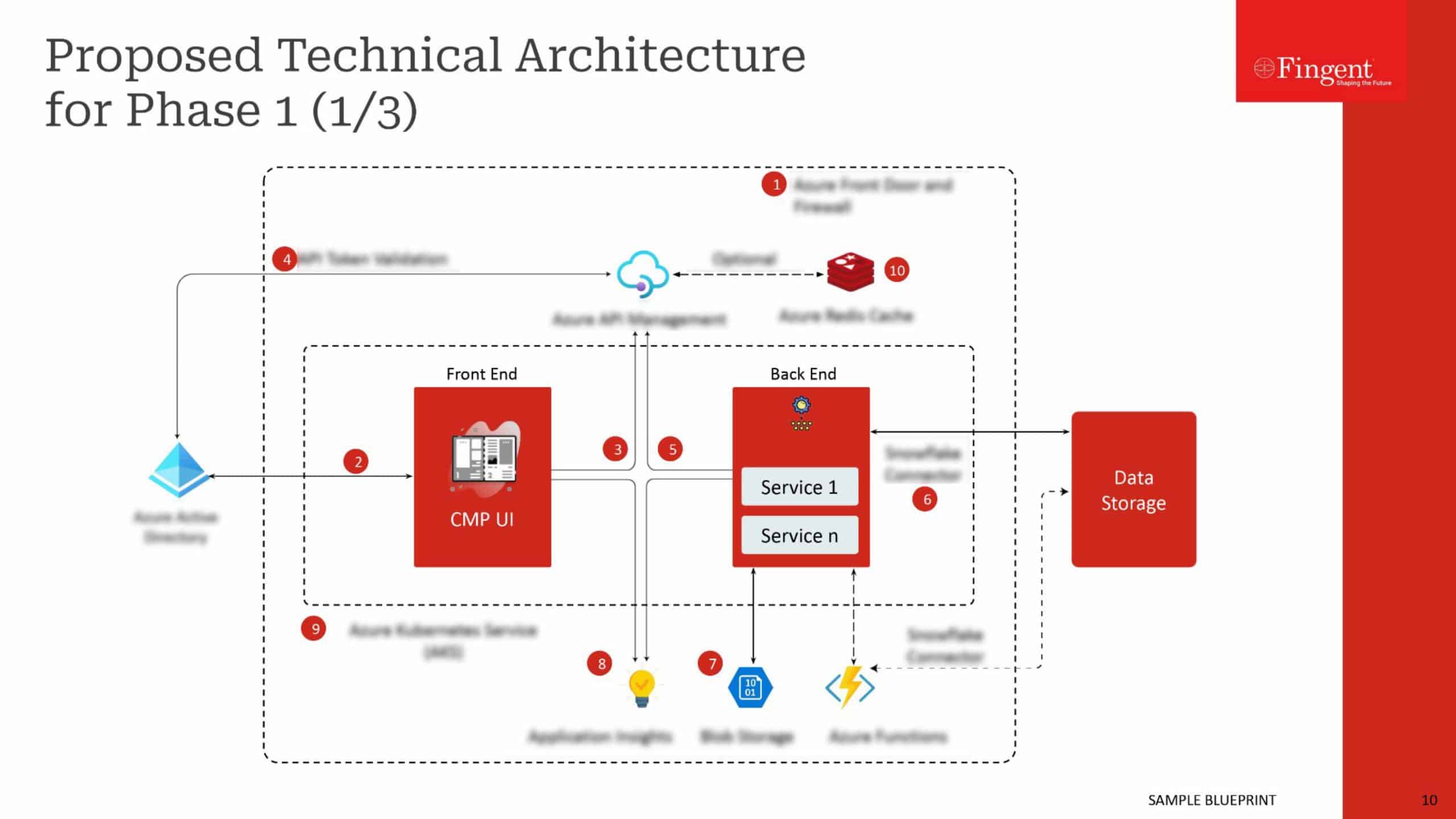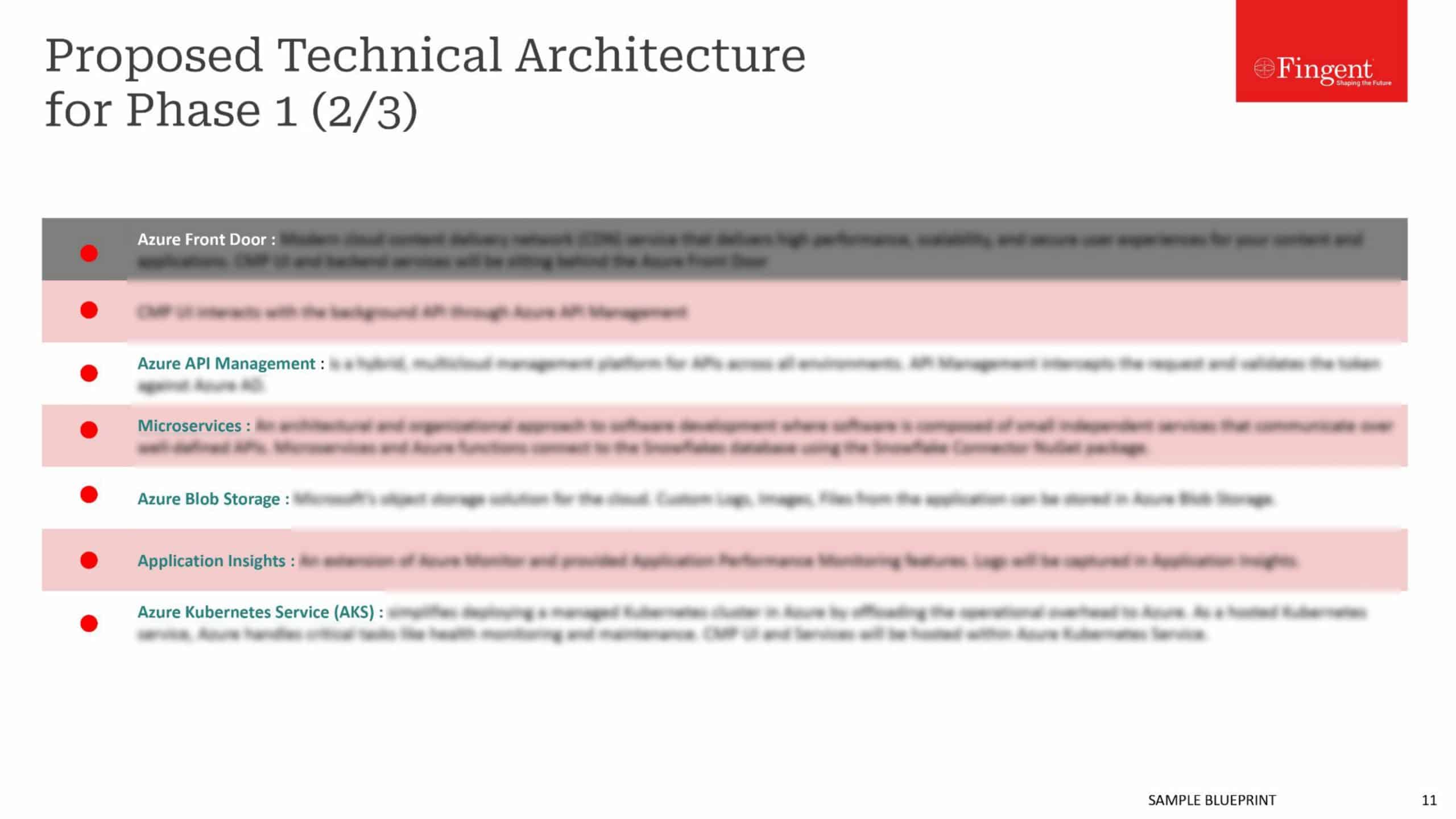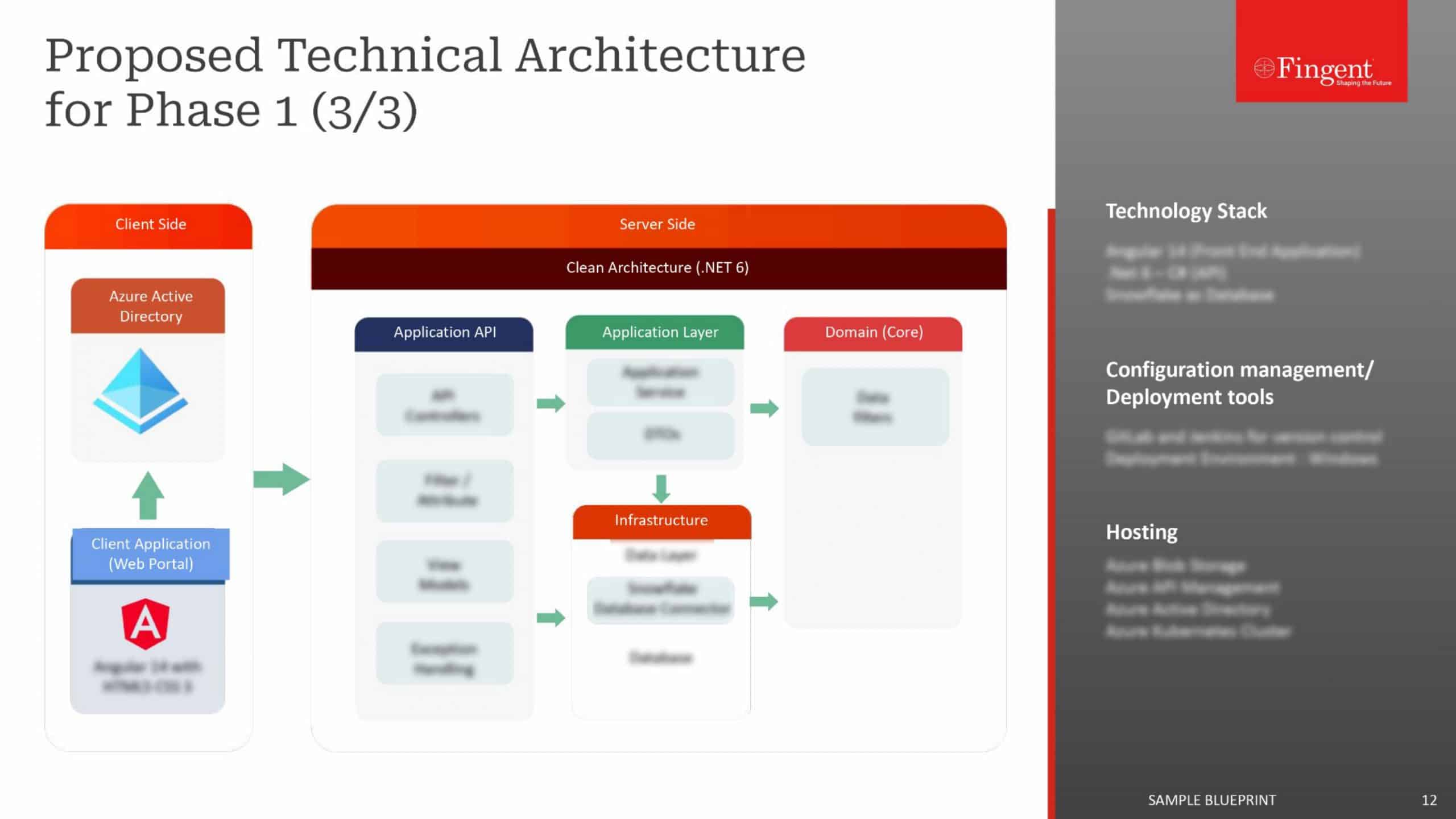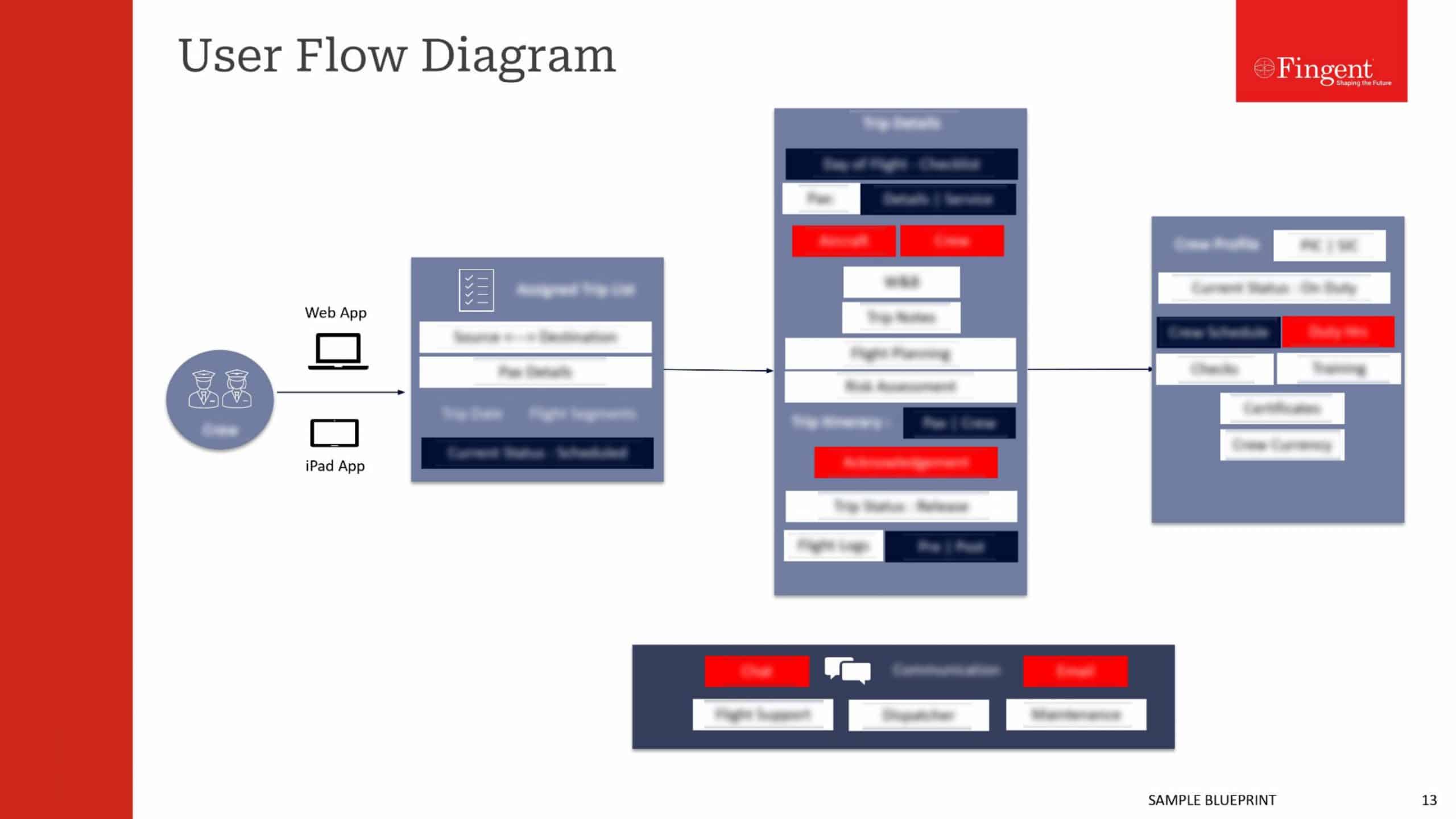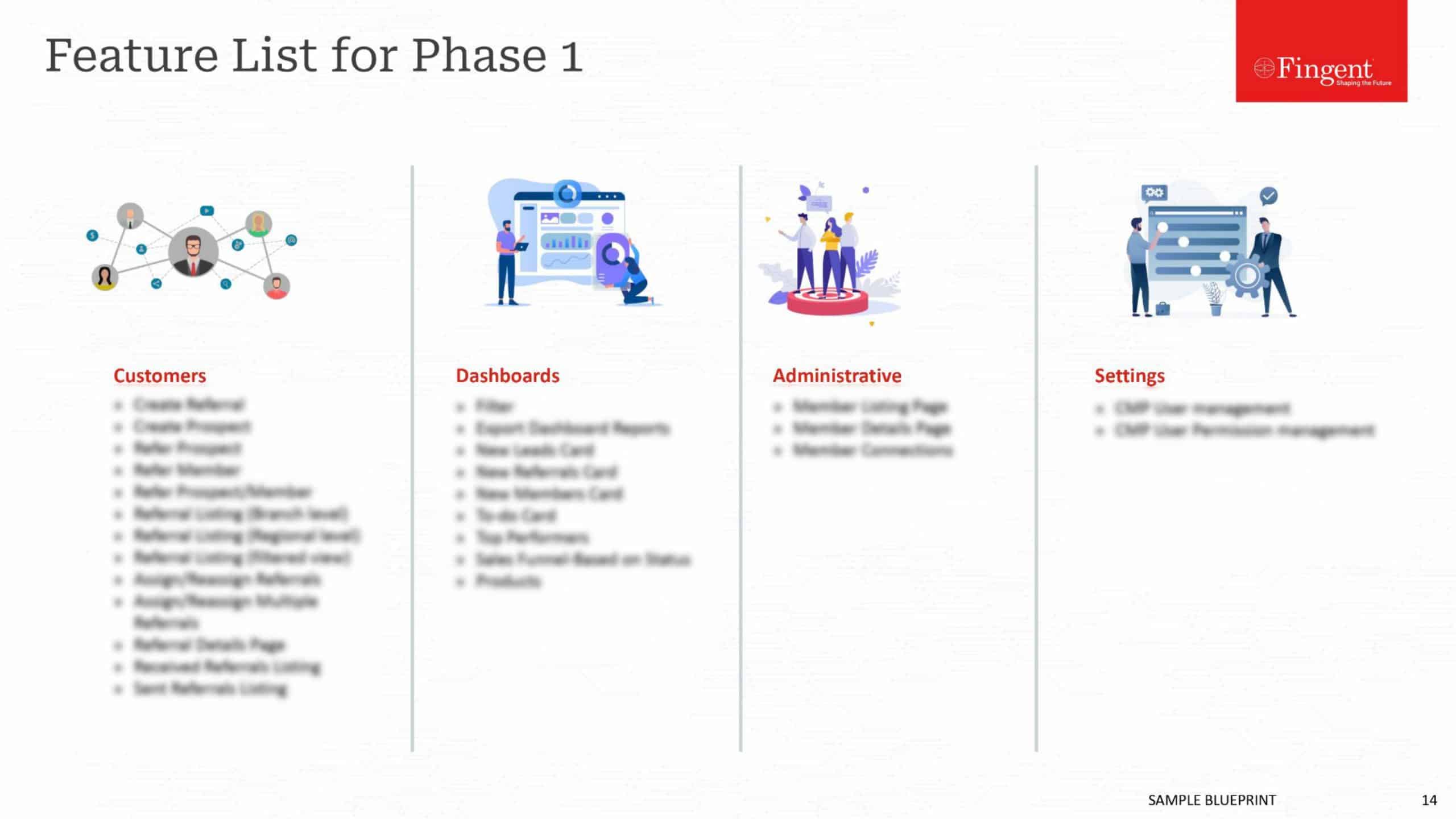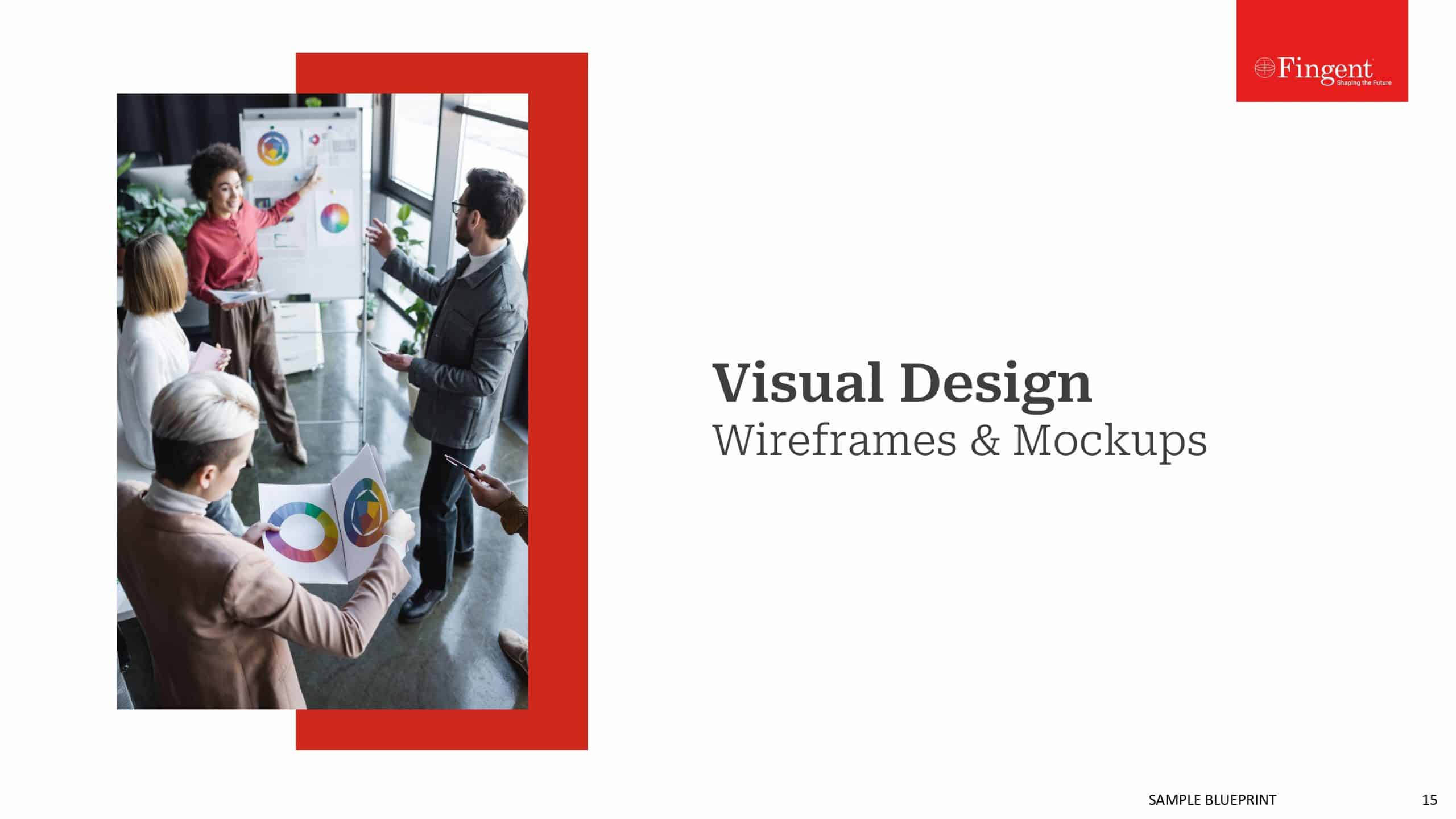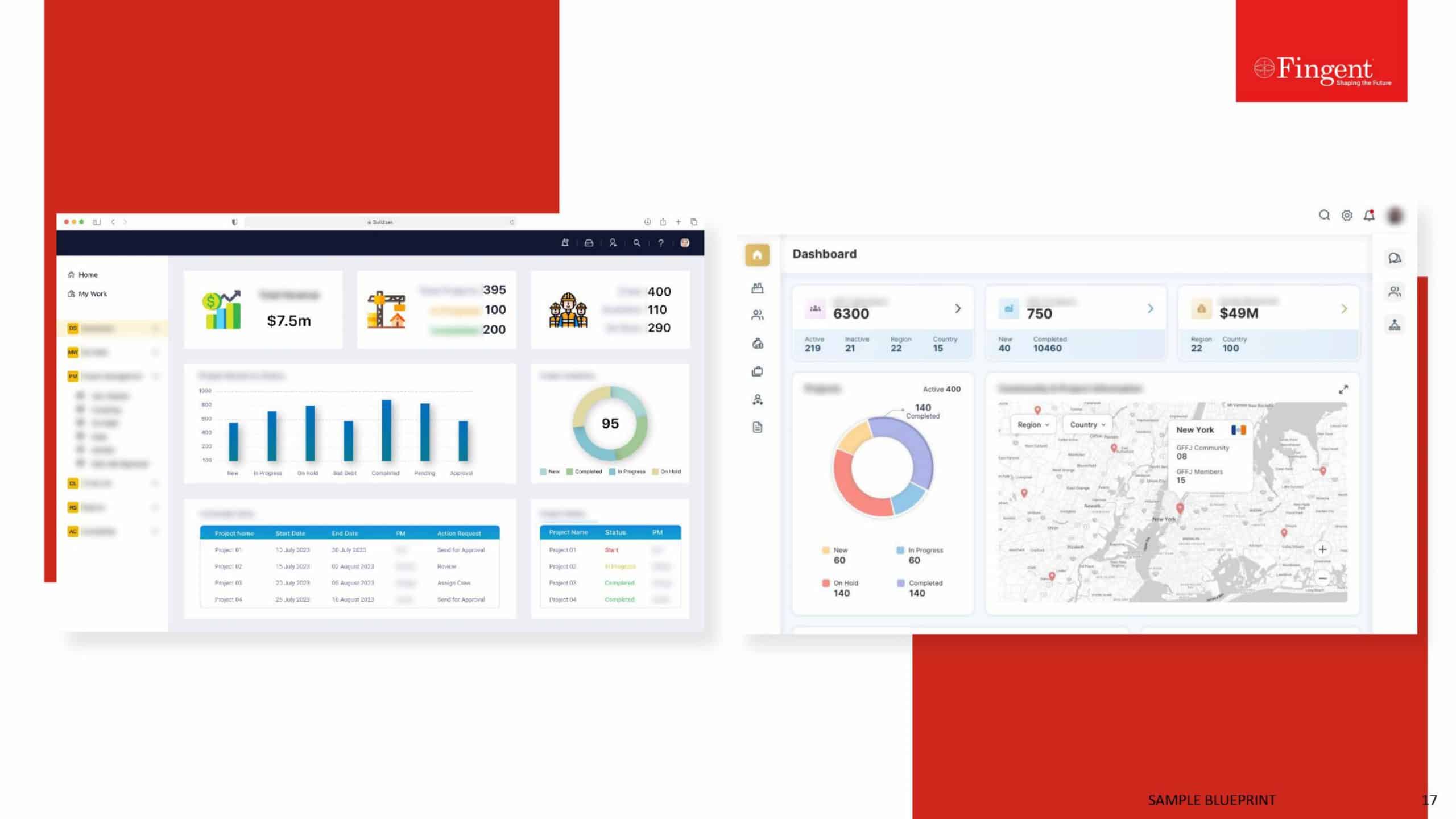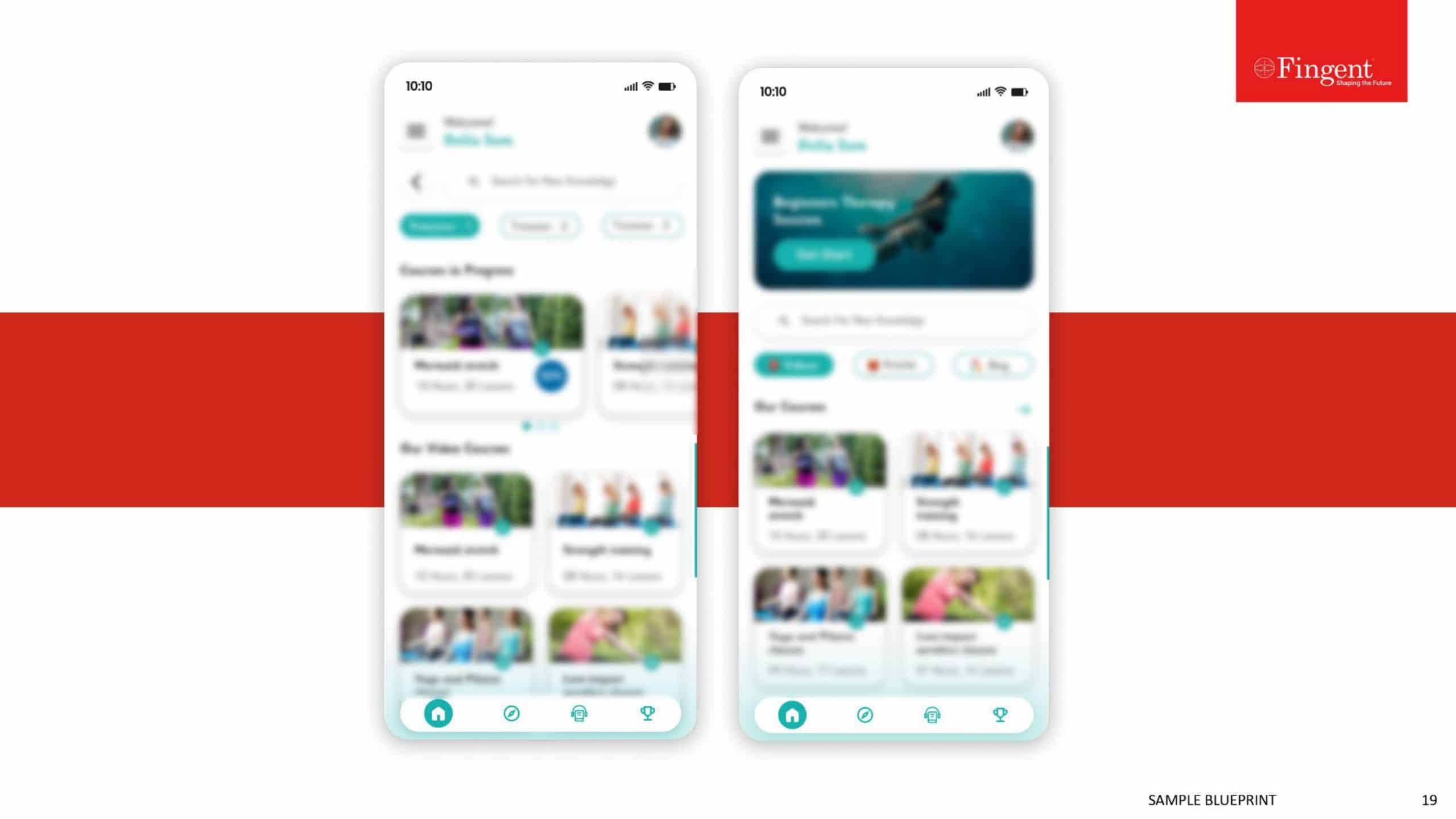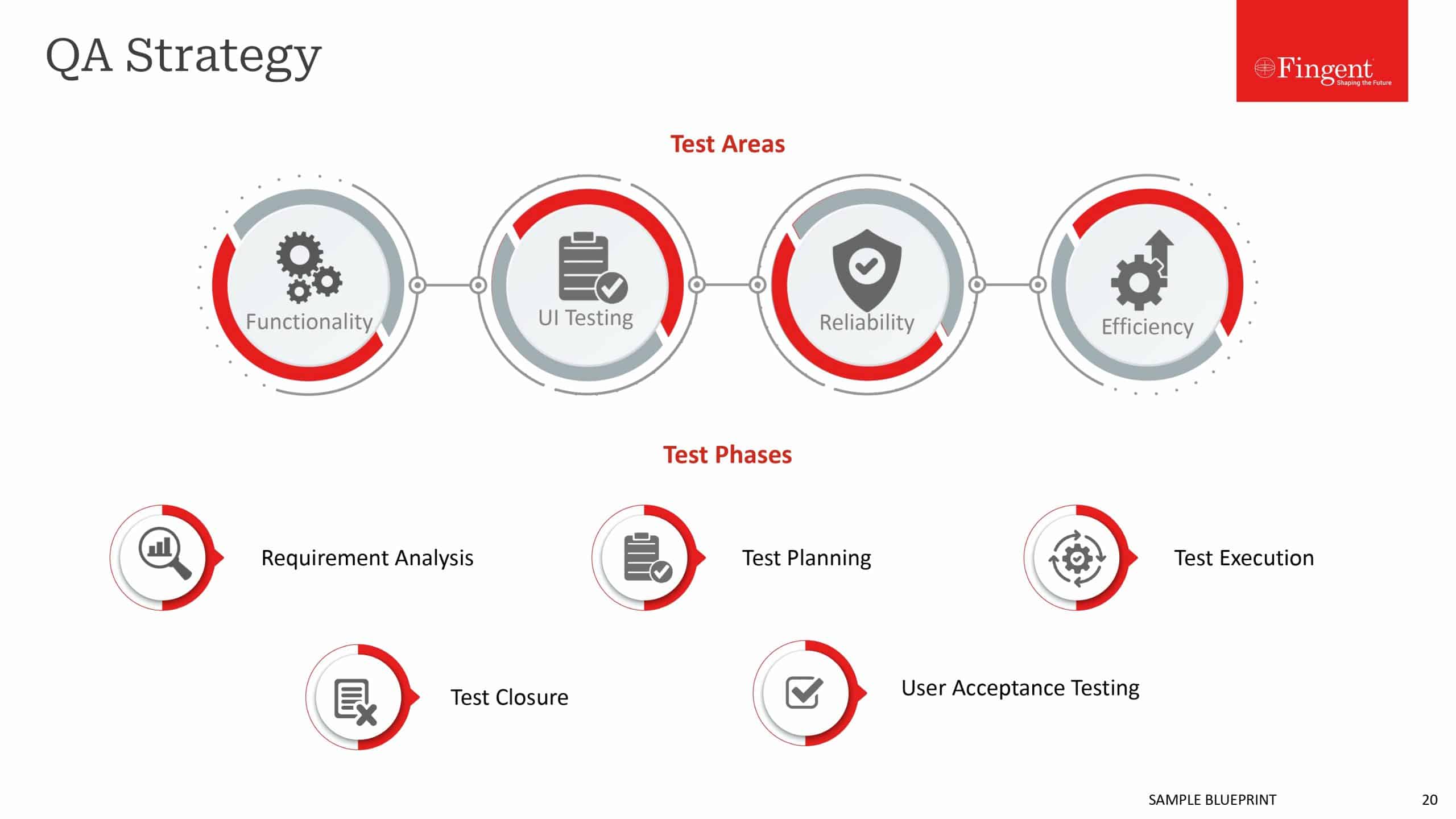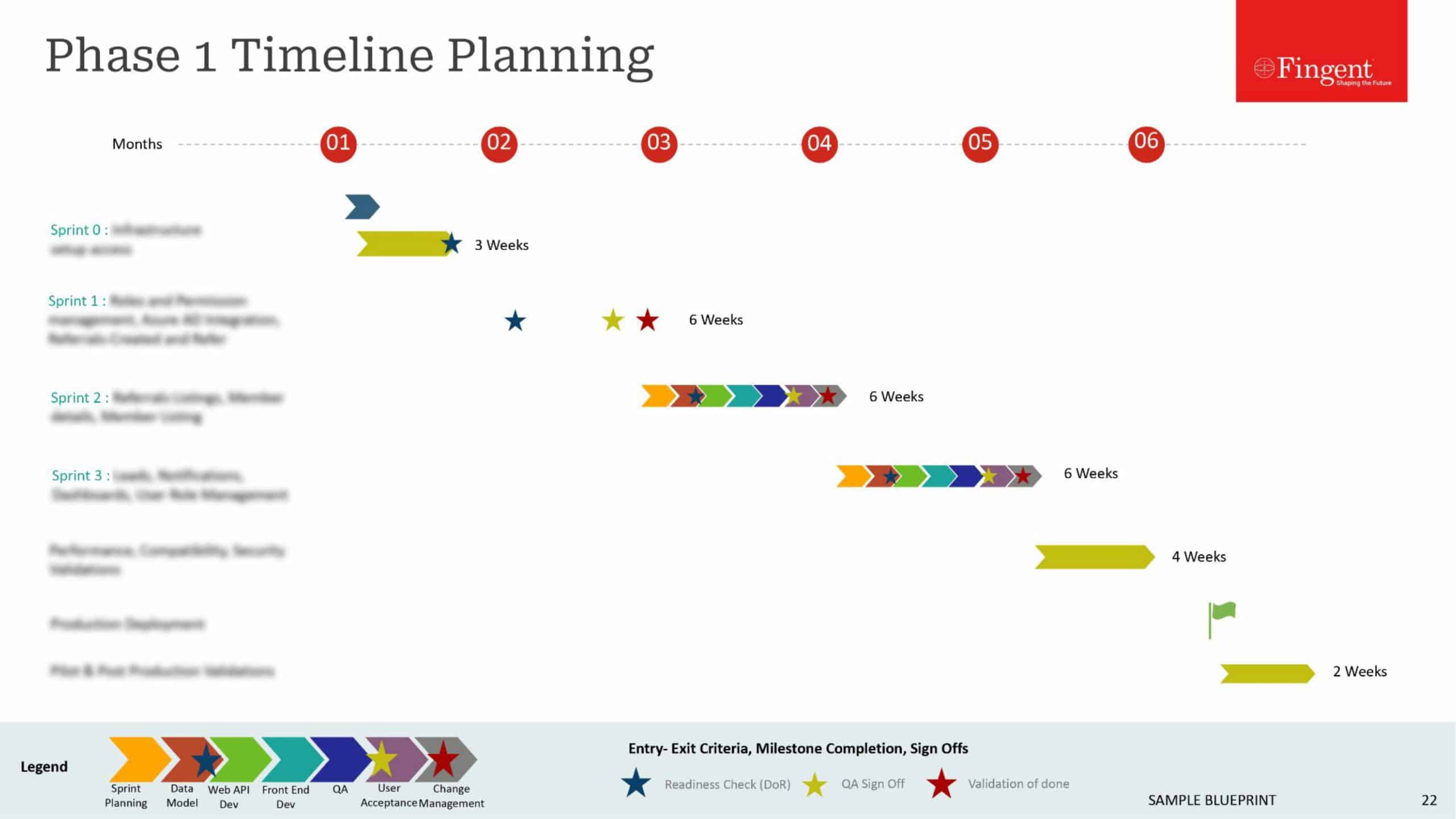Category: Digital Transformation
SAP is widely known for its brilliant abilities and functionalities, the foremost being Data Analysis. The newest version of SAP ERP is the SAP Data and Analytics Solution. It has been making great strides in helping businesses make sense of their data and make intelligent decisions.
But before we dive into that, let us briefly understand what SAP is.
What is SAP ERP?
SAP, or Systems Applications and Products in data processing, is a powerful tool revolutionizing data handling. Its extraordinary data integration capabilities have helped businesses streamline data flow while storing common information securely and efficiently.
As SAP has evolved, it has become an ERP software compiled of many fully integrated modules that have found vital applications in human capital management, data analysis, production planning, plant maintenance, quality management, and more.
Read more: SAP S/4HANA: The Definitive Guide!
Understanding SAP Data and Analytics Solution
Now that we clearly understand what SAP is and what it does let us look into SAP Data and Analytics Solution. SAP has taken the same approach as any reliable technology that would find room to grow and improve itself. SAP Data and Analytics Solution titled SAP Datasphere was launched on March 8th, 2023.
SAP Analytics for cloud, also called SAP Datasphere, is a cloud-based Business Intelligence (BI) tool designed by SAP Company to provide all the vital functionalities of an analytic tool to business users.
Carefully engineered by SAP, this tool provides analytics compatibility from data received from various databases. This tool essentially converts the raw data collected from the transactional system into comprehendible insight to assist business owners in making better decisions.
The SAP Analytics feature solely depends on data algorithms, programming, and operations research to get data insight and to find meaningful information from data cumulated from multiple data sources. This data insight and information ultimately leads to better business planning and forecasting.
Key features provided by SAP Datasphere are – Business Intelligence, Augmented Analytics, Planning, Modelling, and Smart Transformation. Some benefits that business owners can reap from this solution include – high market profitability, more accuracy in the decision-making process, reduced downtime and performance obstructions. This is a reliable solution for many challenges faced by businesses.
How SAP Data and Analytics Solution Helps Businesses Maximize Data Value
SAP solutions are famously known for making the collection, storage, management, and analysis of Big Data from multiple sources easy and seamless. It takes out the complexity of data management with its suite of products and enables businesses to handle greater chunks of structured and unstructured data. SAP uses powerful AI-driven analytics, and this is an added benefit to organizations that want to enhance operational efficiency and customer engagement.
SAP’s new platform, in addition to all its predecessor’s capabilities, also allows businesses to gain meaningful insights into customer trends and likings in order to navigate smarter decision-making across the organization.
With SAP Data and Analytics Solution, a business can get greater value from their data in three notched forms:
1. Database
It effortlessly streamlines and upraises your landscape with advanced database technology that provides flexibility, multi-cloud support, and mixed workload processing to deliver impressive results.
2. Data Management
It caters to a set of technologically advanced tools such as Artificial Intelligence (AI), Machine Learning and The Internet of Things (IoT) to identify, compile, analyze, and draw out the most context-relevant data throughout the business enterprise.
3. Analytics And Planning
Finally, it freely gives people the power and freedom to discover, plan, and act on real-time on-site insights with technologically advanced tools to assist with planning and analytics. All this is combined with a trusted semantic layer.
Watch more: How ERPs like SAP help CFOs make crucial decisions simpler!
Overview Of SAP’s Analytics Tools
Among SAP’s many nifty and beneficial tools are three major analytics tools – SAP Lumira, SAP Business Objects, and Analytics Cloud. We will now look at the basic functionality of these tools and what they bring to the table.
1. SAP Lumira
SAP Lumira, earlier known as SAP Visual Intelligence, possesses many unique features allowing it to visualize and analyze data from many different sources. In a short period after IT had prepared a robust data model and exposed it to a Presentation Layer tool, business users flocked to create impactful visualizations with numbers, charts, filters, and rankings.
2. SAP Business Objects
This tool is a more centralized data reporting, visualization, and sharing suite. It transforms chunks of data into meaningful insights and is available anywhere at any time. Using a flexible architecture, the SAP Analytics platform simplifies, personalizes, and creates dynamic information consumption.
3. Analytics Cloud
SAP Analytics Solution with Analytics Cloud combines analytics and planning with a unique integration, allowing seamless access to multiple data sources. This tool facilitates trusted insights and integrated planning processes throughout the enterprise to help business owners make quick, informed decisions.
How To Identify the Right Tools for Your Business Needs
Selecting the right SAP Analytics Cloud tool for your business can be a daunting job, but it can be made easy by keeping these pointers in mind:
- It is imperative first to analyze your business needs. Gather your organization’s tech team, its investors, and all the people you need to make this decision.
- Once you have sorted out what aspects of your business could use a little push or improvement, scout out a suitable partner to team up with.
- Next, do a thorough background check on your new potential business partner and ensure that you contact referrals before you trust your business’ future in their hands.
- Lastly, take any advice your SAP service provider may offer and keep communication clear.
How Fingent Can Help in Leveraging the Best SAP Data and Analytics Solution
Fingent’s certified experts focus on client-centered transparency and offer complete services with a wide range of SAP products.
Selecting the perfect SAP product fortifies the success of your business. A few extra benefits you receive by partnering with Fingent are – improved security, efficiency in task completion right to the deadline, automation of the data collection process, and an overall 55% gain in productivity. Want to know more?
Give us a call, and let us help you.
Stay up to date on what's new

Featured Blogs
Stay up to date on
what's new



Talk To Our Experts
Stay up to date on what's new

Featured Blogs
Stay up to date on
what's new



Talk To Our Experts
For more than a decade, businesses in all industries have undergone a digital metamorphosis. This evolution is marked by a transition from on-premises software solutions to cloud-based computing technology.
By leveraging cloud-computing resources, businesses can gain access to scalable assets, increase organizational performance, and optimize digital agility.
It’s a mistake to think about cloud solutions primarily as software-as-a-service (SaaS) applications. While these technologies are a valuable component of business modernization, they’re only the tip of the iceberg.
Businesses that create their own cloud-native applications can truly harness the power of discrete cloud technologies to deliver long-lasting competive advantages. As their name implies, cloud-native applications are “native” to the cloud computing environment. In other words, cloud-native software development involves creating applications in components optimized for deployment in the cloud instead of a physical computing environment.
What Is Cloud-Native Development?
In simple terms, cloud-native software development is the process of creating applications using core cloud-computing principles and resources. The architecture of cloud-native applications is highly scalable, responsive, and dynamic.
Cloud-native applications are designed to be deployed and run in cloud computing environments, and as such, they offer a number of benefits to developers. Some of the advantages of developing cloud-native applications include:
- Scalability: Cloud-native applications can easily (and often automatically) scale up or down to meet changing demand with consistent performance levels, making them well-suited for applications with fluctuating usage patterns.
- High availability: Cloud-native applications can be designed to be highly available, meaning they can withstand failures and continue to function even in the event of a hardware or software failure.
- Elasticity and Agile development: Using independent microservices isolates the effects of changes, making it easier for developers to iterate on their products and respond to customer needs.
- Cost efficiency: By leveraging the economies of scale offered by cloud providers, businesses can reduce their infrastructure costs and invest in building and improving their applications.
- Integration with cloud services: Cloud-native applications can easily integrate with other cloud-based services, such as databases, messaging systems, and analytics tools, which can simplify development and improve the functionality of the application.
Overall, the main advantage of cloud-native applications is that they are designed to take full advantage of the capabilities of cloud computing environments, which can help developers build and deploy applications more quickly, efficiently, and at lower costs.
Additionally, many cloud-native applications are “cloud-agnostic,” meaning they can be run on a range of cloud providers (hyperscalers) or function in multi-cloud environments. Much of the appeal of cloud-native software development lies in the ability to yield adaptable and versatile applications. Sometimes applications can benefit from services that are only available from certain cloud providers, which risks “vendor lockin,” so it pays to consider the trade-offs carefully.
Read more: Can Moving to Cloud Native Improve Business Agility?
Why Modern Businesses Need Cloud-Native Development
Like on-premises computing resources, software created with traditional application-development practices are bound by the limits of that technology. As such, they can’t provide the quality of experience that modern audiences expect.
Additionally, applications developed in an old-school environment often need re-factoring to try to match the performance of cloud-native alternatives when the former is introduced to a cloud environment.
By leveraging cloud-native development services, modern businesses can facilitate their digital transformation on a faster time horizon. Cloud-native processes enable businesses to serve their customers better and deliver a frictionless user experience.
Top businesses in virtually all industries leverage cloud-native development. Those that neglect to do so will fall further behind these trailblazers and find it challenging to maintain a foothold within their respective markets.
Adopting cloud-native processes is no longer an optional step—it’s become necessary for businesses that want to thrive in the digital marketplace.
Top Benefits of Cloud-Native Software Development
Your business can tap into the multiple benefits of investing in cloud-native software development. Specifically, your organization can:
1. Streamline the User Experience (UX)
When the goal of cloud native is to develop applications that can serve your business while adjusting to the speed of changing technology, the end user is always the priority.
Because of the improved speed of development and the ability to make changes during the development process, cloud native puts UX first. While there are many ways to enhance the UX, investing in cloud-native development is one of the most effective approaches.
2. Improves Development Strategy
Cloud-native applications enable developers to leverage two essential UX-centric methodologies: continuous integration (CI) and continuous delivery (CD).
Continuous integration is the process of merging code changes using automation. Multiple developers can merge code changes into a centralized project to streamline app development and generate a cohesive, fully functional product.
Continuous delivery addresses post-release application software updates. Instead of occasionally pushing out massive updates, CD involves delivering smaller updates more frequently. This short-cycle approach improves software delivery and performance while yielding a super UX.
Moreover, microservices can be easier to implement with quality assurance automation, which elevates achievable levels of code quality.
3. Protect Business Continuity
Making dynamic, user-friendly applications a central part of your business model can give you a competitive edge in the modern marketplace. However, if your application goes down, customer frustrations will mount, and your brand could experience lasting reputational damage as a result.
Since cloud-native apps can tap into stand-alone, scalable cloud resources, these products are far less likely to experience extended outages due to spiking utilization. Developers can more rapidly isolate and remedy the issue, as well as rapidly test changes when a cloud-native app experiences downtime, thereby protecting business continuity.
4. Meet Evolving Demands for Services
In the digitized marketplace, it seems as if customers’ expectations and demands are in a constant state of flux. Unfortunately, it can be difficult — if not impossible — to pivot rapidly using legacy application development processes.
Cloud-native architectures can give your organization the agility it needs to respond to sudden shifts in customer expectations. For instance, you could add a new feature that enables customers to communicate easily with your brand. You could also frequently update your app’s capabilities to improve overall performance and stay relevant in the digital marketplace.
Read more: Cloud-Native Application Development: How It’s Powering App Delivery
When Should Businesses Shift to Cloud-Native?
The short answer is “yesterday.”
In the long run, cloud-native software development outperforms traditional application development practices at every turn. Cloud-native development reduces risk, has broader scalability, and allows developers to make changes more quickly. Most notably, the speed of delivery is far and above one of the most compelling advantages of shifting to a cloud-native approach.
Your organization is undoubtedly using cloud-based computing resources in at least some capacity. You can complete the transition by modernizing your cloud-native development processes, too. Doing so will empower your business to regain a competitive edge within your respective industry.
At the same time, one should consider the downsides of cloud applications. Some cloud-native applications can be more complex than traditional applications, due to the need to integrate with multiple cloud-based services and manage distributed systems. This can create more opportunities for something to fail.
While cloud native applications can be cost-effective they can also be more expensive than traditional applications in certain situations, particularly if they require a large number of resources or if they have high usage patterns.
The Nexus Between Cloud-Native Development and Business Modernization
Today’s customers want the freedom to interact with brands across multiple touchpoints. This holds true whether your target audience consists of individual consumers or business-to-business (B2B) clients.
Modern businesses live up to this customer expectation by providing their clients access to user-friendly, intuitive, and dynamic applications. These organizations can expand their reach in the digital marketplace, connect with a broader audience, eliminate friction from purchasing processes, and generate more revenue, all by transitioning to cloud-native development.
Conventional, monolithic application development practices often present a significant hurdle to large-scale integrations, digital transformation and business modernization efforts. Your business can’t achieve its digital transformation goals without fully embracing the cloud-computing environment and its many resources.
Examining the Business Impact of Cloud-Native
The notion that cloud-native software development is the new gold standard isn’t just pure conjecture. This fact is supported by numerous case studies and research projects, including a recent business impact brief by 451 Research.
In the brief, the organization’s team reported that:
- 64% of companies develop at least half of their applications using cloud-native technology
- 49% of companies have partially or fully adopted Kubernetes
- 55% of companies have partially or completely adopted containers
451 Research analysts concluded that cloud-native software development has gone beyond the development process and evolved into a full-fledged methodology. As such, it should continue gaining momentum among brands passionate about actualizing digital transformation.
And that’s just the barest overview. Managers can review 451 Research’s business impact brief by downloading the report.
Why Choose Fingent for Cloud-Native Development?
Fingent’s suite of cloud-native software development services is designed to deliver maximum value to our clients. When leveraging Fingent’s cloud-native development services, your organization will experience:
- Consistent, High-Quality Results: As a client-oriented cloud-native development firm, Fingent focuses on providing high-quality, consistent results that exceed expectations. Our robust, agile teams and dynamic quality assurance practices ensure that our deliverables expressly meet your needs and address your most significant organizational pain points.
- Best-of-Breed Solutions: Fingent’s unique approach enables us to provide world-class cloud-native software development services that produce best-of-breed solutions. These cost-effective solutions will align with your budget and delivery timetable. With Fingent, you won’t have any last-minute surprises like budgeting issues or missed deadlines.
- Prebuilt Services: Fingent’s talented team can build truly custom solutions for your organization. However, we can also expedite development by leveraging prebuilt frameworks, applications, and microservices for common functions that are a staple of virtually all industries. Some of these prebuilt services include cognitive AI, shipment, and payment service functions.
- Pay-as-You-Go Models: With Fingent, you can transition away from speculative technology spending — that is, purchasing new machines and acquiring more infrastructure in anticipation that you will succeed. While it’s important to believe in your business and plan for its success, tying up resources on unneeded equipment for months or years will only harm your bottom line. But Fingent enables you to break the cycle of speculative spending and rely more on operational expenses (OPEX). Instead of letting new hardware gather dust in the data center until its eventual use, you can access additional servers on-demand via a cloud-native infrastructure.
- Scalability: As your business grows, you must have the flexibility to support additional users at a moment’s notice. However, scaling IT capabilities can too time-consuming, and costly if you are limited by monolithic software architectures.Take advantage of Fingent’s expertise to create your cloud-native capabilities that are able to support more users in more locations, all while accommodating a dynamic array of devices.
- Speed of Delivery: Fingent can help you stay on top by providing an expedited speed of delivery via cloud-native solutions. Skip the need to field a development team with the right mix of skills but assigning your project to Fingent. We facilitate an accelerated speed of delivery by shifting away from a “big bang” approach to project management when practical and instead focusing on achieving meaningful milestones across the project’s development life. We have the deep bench of personnel needed to keep projects moving ahead at the optimal speed.
- Transparent Project Management: At Fingent, we always keep our clients in the loop. We’ll routinely provide you with updates regarding the status of your cloud-native development project. We pride ourselves on setting firm deadlines and adhering to them.
If you’re ready to achieve business modernization and make your organization a standout player in your industry, take advantage of Fingent’s cloud-native services. Contact us to discuss your latest project.
Stay up to date on what's new

Featured Blogs
Stay up to date on
what's new



Talk To Our Experts
Digital technologies are evolving at an unprecedented rate. Major innovations, such as artificial intelligence tools, machine learning software, cloud computing resources, and big data, have already reshaped the landscape of countless industries and actualized new financial concepts such as blockchain and cryptocurrencies.
As business leaders apply these technologies to their digital transformation initiatives, many focus on functions like sales, customer support, and demand forecasting. While these are mission-critical functions, finance must be front and center during any digital transformation discussion.
Whether your team manages a standalone financial business or is responsible for overseeing an organization’s financial functions, you must embrace the digital world. Let’s take a closer look at the financial technology (FinTech) landscape, identify some ongoing challenges facing the financial industry, and shed light on some tech trends you can adopt to strengthen your competitive advantage.
Read more: Top Ways Business Intelligence In Finance Can empower CFOs Today!
The Financial Business Technology Landscape
FinTech is primarily responsible for the evolution of the financial business landscape, and over the last few years, the FinTech sector has exploded. As of 2023, there are more than 26,000 FinTech startups globally, as well as hundreds of pre-established FinTech developers.
The growth of the FinTech market has largely been supported by venture capital (VC) funding. Though numerous FinTech sectors have received significant financing from VC rounds, three stand above the rest.
Between 2016 and 2021, the following three sectors received over $5 billion in VC funding:
- Capital markets ($8.07B)
- Payments ($6.03B)
- Wealth management ($5.43B)
Digital lending, FinTech tools for small-to-medium-sized businesses, and banking-related projects also received significant funding, though these amounts fell below the $5B mark.
The Top Challenges Facing the Finance Industry
The modern financial business landscape has largely been shaped by uncertainty, market volatility, rapidly shifting consumer trends, and the emergence of increasingly sophisticated technologies.
Businesses in virtually every industry continue to face disruptions and supply chain challenges, hurdles that have placed an additional burden on finance teams, as they are tasked with helping their organizations prepare for the unexpected. Unfortunately, antiquated solutions and strategies don’t provide the agility necessary to promote adequate resilience.
From the financial business perspective, the digital world has led to the development of two new core challenges: accessibility and racing to keep up.
First, consumers expect to be able to access services, accounts, and support on their terms. To meet this demand, financial businesses must develop user-friendly mobile apps that increase the accessibility of their services and work to empower consumers.
The second challenge is interconnected with the first: New technologies are arising so rapidly that some businesses need help to keep pace. Those that struggle fall behind in the digital arms race will cause financial organizations to lose valuable market shares, potentially fading into obscurity.
Read more: Technology in Finance: What to look out for in 2023!
Changing Finance to Thrive in the Digital World
Fortunately, organizations can overcome these challenges by adopting finance technology trends and implementing robust new software solutions.
Organizations committed to reinventing themselves must develop a cohesive digital transformation strategy. As part of the process, business leaders must identify any functions and processes that need to be retired, updated, or improved. From there, they can then begin exploring solutions to enhance the agility and versatility of their business.
Conducting extensive market research is also essential to digital transformation. Financial businesses need to step into the minds of their audience and determine what features, capabilities, and tech services are at the top of their priority lists. Only then can businesses strategically invest in new technologies and solutions that will align with the needs of modern consumers.
Read more: Data Analytics in Financial Services and Banking
Finance Technology Trends that Can Give Your Business an Edge
If your organization is on the precipice of a digital transformation but is still determining where to focus its efforts, examining current FinTech trends is an excellent place to start. A few of the trends in the finance industry include:
1. Self-Service Tools
Most consumers lead hectic lives, which means that many of them don’t want to have to stop in a branch or waste precious time seeking phone-based support. Instead, they’d prefer to have access to user-friendly self-service tools so that they can access support or manage their account whenever is most convenient for them.
Therefore, you should implement customer-facing tools and features that empower your consumers. The easier your services are to access, the better, so make sure that clients can reach these tools via various channels, including desktop and mobile devices.
2. Sophisticated Mobile Apps
The rise of digital-only banking has forever changed customer expectations regarding financing. Digital financial institutions have shown consumers that managing every aspect of an account is possible without ever setting foot in a branch.
While you do not necessarily have to transition to a digital-only business model, you need to provide your consumers with access to a high-quality mobile app that is easy to navigate, simple to use, and reliable.
3. Embedded Finance
The embedded finance technology ecosystem has become too big to ignore. By joining this growing sector, you can create new revenue streams and expand your organization’s reach within the finance industry.
Of the various types of embedded finance solutions, “buy now, pay later” (BNPL) has become especially popular. It is a sales model that allows customers to make purchases immediately but pay for the goods via a set number of more-affordable installments. In 2021, BNPL transactions totaled over $120B, and they are expected to reach a value of $576B by 2026.
Read more: How Embedded Finance will Transform the FinTech Landscape in 2023!
Reinvent Your Finance Business with Fingent!
According to Deloitte, the rapidly-growing FinTech industry will reach a market size of $188 billion by the end of 2024. This statistic illustrates how bank executives and business leaders across the financial industry are embracing digital transformation. In fact, 66.7% of bank executives believe FinTech will “impact wallets and mobile payments globally,” according to Statista researchers.
If your organization wants to keep pace with forward-thinking financial businesses, it must reinvent itself for the digital world. Fingent can help you do that via our financial software development services. We develop highly-secure, purpose-built solutions, such as cash management software, mobile and internet banking apps, digital finance and accounting tools, and other applications that will enable you to thrive in this rapidly evolving industry.
Stay up to date on what's new

Featured Blogs
Stay up to date on
what's new



Talk To Our Experts
Over the years, digital evolution has transformed the way we shop!
The lockdowns and store closures due to the unprecedented events of 2020 has moreover accelerated this evolution and mainstreamed online shopping.
Today consumers don’t just make purchases online. They compare brands, shop for deals, join communities, and engage in immersive experiences. According to Forbes, roughly 21% of all retail purchases will be online in 2023.
There’s no denying that digital technologies are changing the retail industry as we know it. The only question that remains is whether your business is ready for the future of retail.
To help you prepare, we explore the state of the retail industry and shed light on some of the most significant challenges your business faces. Most importantly, we reveal some technology trends you can leverage to compete with major players in the retail space.
Read more: Custom Software Solutions for Retail: All You Need to Know!
The State of the Retail Industry
In a 2023 retail industry outlook report, Deloitte researchers examined how labor challenges, supply chain hurdles, and market volatility would impact retail businesses in the new year.
Of the various predictions made in the report, the most notable is that retail sales growth in the U.S. – barring a recession – will be minimal due to a meager GDP growth forecast of just 0.9%.
Additionally, researchers found that nominal average weekly earnings rose by 8.3% between December 2020 and December 2022. However, real earnings decreased by approximately 5% due to inflation. In other words, consumers have less purchasing power even though their weekly earnings have nominally increased.
In light of these predictions, retail businesses must remain fluid and agile. In 2021, many retailers increased inventory volume by 11% on average to contend with supply chain volatility.
Continuing to maintain an extensive inventory with a potential recession just over the horizon would be unwise, as doing so would leave retailers with less liquidity and could hinder their ability to capitalize on emerging technology trends or shifts in consumer spending habits.
Retail Businesses Must Evolve or Fail
Like many others in the retail industry, you probably hoped 2023 would represent a continued progression toward “normalcy.” However, many of the changes affected by the global pandemic are here to stay. Modern consumers expect a more technology-centric retail experience, even if they choose to shop in-store.
In addition to adapting to the new consumer, you must also navigate the aforementioned economic challenges poised to persist throughout 2023 and beyond. To make matters worse, the quit rate of employees in the retail industry remains at about 4%, significantly higher than the national average.
While these interconnected issues seem to have created a perfect storm, it’s possible for your business not only to survive the future of retail but thrive in it. To do so, you must familiarize yourself with the latest tech trends and how they might affect your reimagined business model.
Key Tech Trends Shaping the Future of Retail
To stay relevant and competitive, we suggest you consider how adopting the following key tech trends can impact your business:
1. A Shift to Digital Goods and Services
Even if your company sells physical products, offering digital goods and services is an excellent way of differentiating your brand from retail businesses that aren’t so forward-thinking.
For instance, you might commission a development agency to create a custom mobile app for your business. You could then use this app to connect with customers, deliver digital goods (i.e., coupons or top customer badges), and nurture feelings of loyalty among your target audience.
You can take this concept further by creating a digital community that lets shoppers share how your products and goods make them feel or improve their daily lives.
2. Omnichannel Shopping Options
The shopping experience is no longer linear. Instead, customers typically interact with a brand along multiple touchpoints and channels before actually making a purchase. With this in mind, you must adopt interconnected technologies to seamlessly guide leads through each phase of the purchasing journey.
What does that look like, exactly? First and foremost, you should have a dynamic, user-friendly, mobile-optimized website in place.
You’ll also need to give consumers multiple ways of interacting with your brand, such as your website, mobile app, and brick-and-mortar store. The top brands are already doing this — your company should follow suit.
Read more: Leading the Powerplay With Retail Business Intelligence
3. Social Media-Centric Campaigns
While you already have social media pages for your company, you may not be using these channels to their full potential. The most successful brands have tapped into meme culture, hashtags, influencers, and other trends that are native to social media to reinvent the customer journey.
Putting social media at the center of your marketing campaigns allows you to fuel online shopping in new ways and connect with younger audiences.
There are many ways to up your social media marketing efforts, including hosting live events, holding Q&A sessions, and interacting with followers in the comment section.
4. Automated Pricing
Automated pricing involves using software to set prices according to variables of significance to the store. Automated pricing technologies have become a valuable resource for big-box retailers in recent years. Smaller businesses are catching on, using this convenient technology to ensure that product prices are set to optimize profitability for both online and in-store products.
Implementing pricing automation solutions will reduce the workload on your staff, as they’ll no longer have to set prices manually. This will help you overcome labor shortages and improve productivity. Automated pricing tools also allow you to deliver better value to customers by running short-term sales or discounts.
Read more: How To Power Your Retail Business with Augmented Reality?
Stay Ahead of the Curve with Fingent
A mixture of in-person shopping experiences and tech-centric journeys will shape the future of retail.
While many modern consumers still like to make purchases at brick-and-mortar shops, 63% of all buying journeys start online. As such, your organization must embrace the latest retail industry technology trends to provide consumers with an experience that seamlessly transitions between channels and mediums.
To achieve such fluidity, you need a technology partner like Fingent that understands the thoroughly modern challenges retail businesses face.
Fingent provides end-to-end custom application development services for retailers. Our dynamic team can create tailor-made field sales applications, inventory management tools, omnichannel fulfillment solutions, and other digital technology resources you need to maintain your edge.
Connect with us today or submit a request for a proposal to learn more.
Stay up to date on what's new

Featured Blogs
Stay up to date on
what's new



Talk To Our Experts
Stay up to date on what's new

Featured Blogs
Stay up to date on
what's new



Talk To Our Experts
The automobile industry is one of the largest sectors in the world. In just the U.S., the car & automobile manufacturing industry boasts a market size of $104.1 billion.
However, even an ecosystem as large as the automotive industry is not immune to the unprecedented challenges over the last few years. The coronavirus pandemic and subsequent semiconductor chip shortage forced manufacturers to cut 11.3 million vehicles from production in 2021.
In addition to supply chain challenges, automotive manufacturers have contended with labor shortages, shifts in consumer demand, and pressures to create a sustainable work environment.
But, like any resilient industry, the automotive sector has leaned into these new challenges and has begun to address them proactively. Let’s take a closer look at what these hurdles entail and, more importantly, how automotive businesses overcome them via technology’s strategic implementation.
Challenges and Trends Reshaping the Automotive Industry
While many challenges and trends prompt the automotive industry to evolve, three stand out above the rest. These roadblocks include:
1. Ongoing Worker Shortages
Like many other business verticals, the automotive industry has been plagued by worker shortages. Manufacturers need help to fill vacancies at every level of the organization, including line-level staff, decision-makers, and engineers.
This worker shortage has made it nearly impossible to rebuild supply and catch up to runaway consumer demand for new vehicles.
2. Supply Chain Disruptions
Various legs of the automotive supply chain have faced disruptions over the last few years. Of these, the shortfall of semiconductor chips had the most significant impact on production and vehicle inventory.
Unfortunately, many experts predict the shortage will continue well into 2023, if not beyond. It is too late for automakers to prepare for this extended chip shortage. All they can do now is adjust manufacturing strategies to align with consumer demand and cut back production on less popular vehicles.
3. The EV Revolution
Despite these other concerns, the electric vehicle (EV) market continues to grow. By Q4 of 2022, EV sales represented 5.6% of all auto transactions. This percentage doubled from the year prior when EV sales made up just 2.7% of the total auto market.
This statistic demonstrates that consumers are becoming more environmentally conscious and are interested in decreasing their impact on natural resources. Government incentives and tax credits are further contributing to the surging popularity of electric vehicles.
But what does all this have to do with the future of work in the automotive industry? It means that automakers will need to implement new and more sophisticated production processes and hire better talent if they hope to push the envelope in the EV space.
The New Industry Focus: Creating a Sustainable Work Environment
One of the biggest drivers of change in the automotive industry is a global push toward creating a sustainable work environment.
Historically, the automotive sector has been anything but sustainable. Traditional assembly line-based production strategies focus on efficiency at the expense of almost anything else. These tactics result in the consumption of excessive amounts of power and often produce an unnecessary amount of resource waste.
However, the next-generation automotive industry will likely be unrecognizable to the pioneers of the last century. Modern manufacturers are reimagining every aspect of the supply chain, from material sourcing to assembly and distribution. Visionaries and thought leaders are also encouraging a shift away from old-school engineering and development processes in favor of AI-powered practices prioritizing efficiency.
Even the retail sales aspect of the automotive industry is changing. Many dealers are shifting toward online transactions, and some are transitioning increasingly to a made-to-order sales model. The end result is a more agile and less wasteful automotive supply chain.
Technologies that Can Fuel the Auto Sector’s Metamorphosis
The future of work in the automotive industry will focus on sustainability, resilience, and agility while prioritizing efficiency. To realize their aspirations of a sustainable work environment,
industry executives, managers, and workers must embrace leading-edge technologies, including:
1. Predictive Analytics Software
Predictive analytics software will influence numerous aspects of the automotive industry. Organizations interested in forging sustainable work environments can use these analytics tools to identify production waste and increase operational efficiency. Additionally, they can leverage these solutions to create more energy-efficient vehicles that produce fewer greenhouse gasses.
Predictive analytics technologies will also assist with demand forecasting — organizational leaders can use these insights to prioritize in-demand vehicles as they contend with ongoing chip shortages.
2. Automation Tools
Automation tools will prove invaluable amid labor and talent shortages. Businesses in the automotive industry can use automation software to streamline redundant back-office processes and improve communication across the entire supply chain.
Manufacturers can also use automation tools to ramp up production while conserving energy and reducing waste.
3. Machine Learning and AI Solutions
Machine learning and artificial intelligence technologies can transform every link in the automotive industry supply chain. Businesses can use these complementary technologies to optimize raw material sourcing, vehicle distribution, and production.
Because they allow for a more data-driven approach to manufacturing and sales, these technologies can reduce waste while simultaneously creating more agile and resilient supply chains. In turn, this will help keep the costs of vehicles manageable, thereby increasing accessibility to energy-efficient automobiles and EVs.
Read more: AI and ML for Faster and Accurate Project Cost Estimation
Accelerate Your Transformation with Fingent
When your business is in the automotive industry, creating a sustainable work environment should be one of your top priorities. Doing so will help you attract and retain top talent, meet consumer demand for more efficient vehicles, and align your business model with the latest regulations and compliance frameworks.
To achieve these goals, you will need access to purpose-built technologies designed for your business’s unique needs. That’s where Fingent top custom software development company, can help.
Our development experts can create dynamic software for your business. From customer-facing applications to internal solutions that empower your staff to be more productive, we build the software you need to thrive.
To learn more about our wide range of technology development services, connect with Fingent today.
Stay up to date on what's new

Featured Blogs
Stay up to date on
what's new



Talk To Our Experts
How the insurance industry delivers service has evolved significantly in the last decade.
Regardless of what form of insurance sales or policy management your organization is engaged in, you can attest that face-to-face interactions are no longer routine and are, in fact, an oddity.
As the insurance industry’s new normal, more and more interactions between customers, industry experts, other organizations, and adjustments claims occur digitally. Though phone-based communications will continue to be a part of the customer service process for the foreseeable future, customers, care providers, other insurers, and virtually anyone else with whom an insurance company interacts have come to expect a largely digitized experience.
For any organization to thrive in the insurance industry of tomorrow, it must take steps to evolve its processes today. That means creating a cohesive modernization strategy and investing in leading-edge technology solutions.
Read more: Answering the Burning Questions of Business Leaders on Digital Transformation!
Top Challenges Facing the Insurance Industry
To understand what a modernized strategy looks like in the insurance industry, it’s vital to examine some of the top challenges businesses will face in the coming years.
1. Staffing Shortages
Historically, the insurance sector has contended with turnover rates somewhere in the range of 8-9%, according to Insurance Business America, but that span climbed to 12-15% by September 2022.
That additional turnover significantly impacts business continuity and diminishes the customer experience. It can also negatively influence insurers’ ability to replace members of leadership that are retiring or stepping away from the industry.
2. Skyrocketing Costs
Inflation and numerous other factors have contributed to rising costs of everything from healthcare to vehicles higher than ever before. Naturally, some of these cost increases are passed onto insurers and their customers, so insurance companies must find ways to absorb some of these expenses while mitigating rate increases for their clients.
Insurers should also explore ways to reduce their operating costs to keep coverage prices lower. Otherwise, businesses may find it challenging to retain customer accounts, particularly in sectors like automotive insurance, where consumers can freely shop around and change policies in six-month intervals.
3. Antiquated Legacy Systems
Some legacy systems hinder the ability of many businesses to embrace digital transformation. These aging platforms can make it challenging to comply with relevant regulatory requirements and increase an organization’s overall operating costs.
The longer that insurance companies cling to antiquated systems, the harder it will be for them to streamline traditionally tedious practices, such as claim management. Therefore, insurance companies must replace these inefficient, disjointed platforms with modern, unified alternatives.
The Role of Digital Transformation in Solving These Challenges
Digital transformation can bring modern technologies to any business process to improve its operation. Fast-growing digital transformation technologies include machine learning, artificial intelligence (like ChatGPT), customer relationship management platforms, and intelligent document processing software.
Digital transformation holds the key to solving the insurance industry’s most significant problems, and it appears that many in the industry realize this, as recent projections estimate that insurance technology spending will increase by 25% between 2022 and 2026 in the US and UK.
A cohesive digital transformation strategy will lay out a roadmap for replacing aging technologies with modern alternatives, and once these technologies have been replaced, the cost savings are almost immediate.
In one example of how a digital transformation strategy led to practical innovation, Fingent joined forces with the California law firm of Sapra & Navarra, LLP to develop Ambit, an AI and ML program that simplifies and enhances the management of workers’ compensation claims. Claims may include hundreds of pages consisting of a variety of letters, affidavits, forms, and other documents from claimants, doctors, lawyers, investigators, employers, and witnesses, among others. Utilizing both artificial intelligence and machine learning, the Ambit system streamlines the claims management process, reducing claim costs, and helps break the old practices of:
- Taking too long to assess claims
- Treating similar claims inconsistently
- Not equipping claim adjusters with modern tools
Instead, Ambit improves the efficiency of all parties — insurance carriers, self-insured companies, lawyers, and claim adjusters — while reducing costs for insurers by 57%.
The Ambit solution was designed to:
- Easily ingest the many documents in the claims process
- Quickly identify missing, processed & corrupted pages
- Review structured and unstructured documents automatically
- Identify areas of concern
- Suggest potential legal defenses
- Automate calculations and reminders for important legal deadlines
- Generate case summaries, with action plans
These automation capabilities not only make life easier for claims managers but enable organizational leaders to offset productivity issues created by ongoing labor shortages by reducing onboarding time for new hires. These capabilities result in more uniform handling of the claims while speeding their resolution and lowering their overall costs.
In general, automation technologies, such as those implemented during a digital transformation initiative, will also decrease operating costs, enabling insurance companies to increase their profitability and offer their customers more competitive premiums.
Read more: How AI Drives Digital Transformation In The Insurance Industry
The Essential Components of Digital Transformation
The technology trend in insurance is clearly moving from the strictly paper-based methods of the past to the digital. Beyond static websites to mobile apps. Beyond email to text and chat. Beyond processes driven by people to more and more intelligent automation that speeds up and uniformly handles all kinds of processes from marketing, and operations, to customer service.
Every organization’s digital transformation roadmap should be as unique as the business itself, but every digital transformation strategy must include a few core elements:
- Clear objectives
- An integrated plan
- A leadership-driven approach
- Investments in the right technology
When creating your organization’s digital transformation strategy, you should start by defining your “why.” In other words, you must identify the reasons you are undertaking this initiative in the first place.
From there, work with a digital transformation partner who can help you create an integrated plan that includes everyone from executive members to line-level employees.
Digital transformation efforts — even small ones — require the active support of top management. Change is the hardest thing to achieve in the organization and without the sponsorship of the corporate leaders, the effort is unlikely to succeed.
Finally, you will need to replace outdated, inefficient technology with modern, robust solutions. When appropriate,
partner with a custom software development firm that can provide you with a purpose-built solution you need for your business. They are equipped with the personnel and experience to generate a solution in the minimum timeframe and without the need to increase in-house headcounts.
If your organization has been exploring ways to improve the customer service experience, increase productivity, improve profitability, and streamline its operations, it is more than ready to embrace digital transformation.
Successfully facilitating digital transformation requires a cohesive strategy, some cutting-edge technologies, a commitment to doing things better, and the right development approach.
Read more: Digital Twin Improving Predictability and Risk Management in Insurance!
How Fingent Can Accelerate Your Process
Naturally, the cornerstone of any digital transformation initiative is technology choices. These may be an off-the-shelf system for standard processes, the integration of existing systems or, your transformation may demand a custom solution that can accommodate your business needs unlike systems available to anyone else.
At Fingent, we specialize in creating resilient custom software solutions that are able to change and adapt according to your requirements. We work with insurance industry clients to help them streamline mission-critical business processes, and – as in all our projects – we accomplish this by providing dynamic, unique software that incorporates the most appropriate technology, such as the latest in machine learning and artificial intelligence technologies.
Connect with Fingent today to accelerate your digital transformation with the help of an experienced software development partner.
Stay up to date on what's new

Featured Blogs
Stay up to date on
what's new



Talk To Our Experts
According to a 2020 report, 58% of real estate brokers have a clearly defined digital strategy, a figure that represents a 6% increase from the two previous years and thus indicates that an increasingly large percentage of the real estate industry is buying into the concept of digital transformation.
While the real estate industry is — and always will be — centered around interpersonal interactions between buyers, sellers, and agents, technology plays a more significant role in these transactions than ever before. Innovative real estate firms worldwide are leveraging futuristic technology far more frequently, and those that fail to adapt will find it hard to keep up.
Technology such as machine learning (ML) software, artificial intelligence (AI)-powered mobile apps, drones, and augmented reality (AR) solutions are no longer just “nice to have” in the real estate industry. Digital transformation is an inevitability that real estate professionals must embrace if they want to thrive in such a rapidly evolving business space.
Why Digital Transformation Is Inevitable for the Real Estate Industry
While many factors fuel digital transformation in the real estate industry, the most potent catalyst is consumers. Home buyers and sellers have grown accustomed to being able to perform a variety of essential life tasks online thanks to the ever-evolving nature of smartphones and other sophisticated internet-connected devices.
According to a 2022 report, 51% of all home buyers found the properties they purchased via the internet. Another 29% found their dream home with the assistance of a real estate agent, whereas just 4% located the home they eventually purchased via traditional signage.
These statistics indicate that the vast majority of prospective buyers are taking charge in their search for their next home. Real estate agents who want to keep pace must incorporate futuristic technology into their sales models or risk finding it increasingly difficult to provide consumers with the efficient and primarily digital experience they prefer.
Still, the industry is about more than buying and selling homes and real estate technology means more than improving sales. Many property management firms want to leverage technology for payment platforms, leasing and facility management, back office processes, and more. Most important to these management teams is having all those processes in one place.
Read more: Reshaping Real Estate Operations with Fully Integrated End-to-End Software.
Futuristic Technology is Poised to Reshape Real Estate
The real estate industry can solve many existing challenges by embracing digital technologies. From complex workflows brought on by the multitude of activities required of a real estate firm to communication shortfalls, there are many leading technologies that property services can embrace as part of a digital transformation. While there is no single answer, some forms of futuristic technology that are already making a big splash in the real estate industry include:
1. ML and AI
Machine learning and artificial intelligence technologies are true game changers for the real estate industry. They enable real estate agents and brokers to automate redundant tasks, like creating timesheets, filling out paperwork, generating offer documents, or scheduling meetings. Within property management, automation can lead to higher sales volumes, efficient back-office solutions, and a more valuable experience for clients and management teams.
2. Mobile Applications
Real estate agents and property managers are always on the go, and while smartphones help them stay connected to clients and co-workers while in the field, these devices are only as good as the applications installed on them.
With that in mind, many real estate firms are turning to robust mobile applications that are purpose-built for the real estate industry. These applications can enable the performance of a wide array of tasks remotely, including approving documents, sending forms to clients, and much more.
3. All-in-One Property Management Platforms
Traditionally, real estate firms that manage rental properties have done so by using a cobbled-together network of disparate applications. Though that kind of approach works, it is hardly ever efficient or cost-effective. Fortunately, dynamic, all-in-one property management platforms like Rentmoji exist.
Created by Fingent, Rentmoji empowers property managers to govern every facet of property management from a single, user-friendly platform that includes a mobile application. The platform includes a suite of interconnected apps, each of which addresses specific property management challenges and pain points.
With separate sub-portals for tenants, owners, and vendors, the Rentmoji suite provides complete transparency for all parties and makes process automation a breeze. Rentmoji is the reality of futuristic technology for the present.
Read more: How Does The NAR Settlement Reshape the U.S. Housing Market
4. Drones
Drones enable real estate agents to capture aerial pictures of a home and property to provide a more comprehensive overview of each listing. Unique and captivating aerial drone photos on an online listing will help real estate agents make the properties they are selling stand out. In addition, multiple listing service (MLS) reports that properties with drone images in the United States are 68% more likely to sell.
Agents can also use drones to help assess property lines, landscapes, and potential maintenance concerns. Real estate agents and property managers can then use this information to help clients make informed purchasing decisions or evaluate upkeep issues.
5. AR/VR Technologies
Virtual reality (VR) and AR technologies benefit firms that sell yet-to-be-completed homes. Agents can use these technologies to give buyers a sneak peek of a home before it is built, and these digital images can help agents close more deals and bring customers’ vision of their dream home to life much more quickly as a result.
AR and VR technologies can also be used to digitally stage properties, an approach that is much more cost-effective than bringing furniture in just to stage a vacant home. Staging properties with AR/VR tech makes vacant homes more appealing and can thus speed up the selling process.
Read more: Augmented Reality and Virtual Reality: Transforming The Real Estate Industry!
How Fingent Can Help Real Estate Firms Embrace Digital Technologies
If you operate within the real estate industry and want to gain a definitive edge by investing in digital transformation, Fingent is here to help. We create customized, futuristic technology that is tailor-made for the needs of your business.
We understand the challenges that affect the real estate industry. You’re seeking solutions to marketing challenges that help you stand out against the growing competition, and your business wants to adapt to evolving tech trends. We have a track record of solutions that are here to help.
Our custom software development professionals have created numerous real estate software solutions for clients that engage in every facet of the industry, from single-family residential sales to commercial property management.
To learn more about how Fingent can help you step into the future, contact our team today to schedule a consultation.
Stay up to date on what's new

Featured Blogs
Stay up to date on
what's new



Talk To Our Experts
Organizations are enhancing their competitiveness by prioritizing digital transformation as the global marketplace becomes increasingly crowded and interconnected.
Broadly speaking, the concept of digital transformation involves the systematic evolution of core and auxiliary business processes to take advantage of advances in computing and software systems to increase efficiencies.
However, no digital transformation initiative will be effective unless it involves an app modernization component.
Also referred to as “application modernization,” app modernization enables organizations to transform effectively, increase their competitiveness, and differentiate themselves within their respective industries.
What is App Modernization?
A “legacy” system uses outdated software or computing hardware to deliver important organizational capabilities but cannot interact with other systems or be updated effectively. App modernization is the process of addressing known issues in outdated legacy software. The issues may include:
- Software problems (“bugs”) that cannot be resolved fast enough,
- Missing features will take too long to add,
- Fragile code (changes tend to create new problems),
- Technology obsolescence (e.g., few programmers for the source code language used),
- A software vendor is out of business, etc.
Commercial off-the-shelf software (COTS) may not provide source code access, preventing an organization from addressing software issues. When pursuing app modernization for software for which source code is available, your organization can choose between one of three approaches:
- Revitalizing an application old applications
- Replacing an application technology with custom-built solutions
- Rehosting or re-platforming
Organizations that choose to revitalize old applications will be updating existing software with new capabilities and features. This may also include refactoring (editing the software to do the same things better).
Read more: Why choose custom software over commercial off-the-shelf solutions?
Other companies may elect to get rid of aging technology to replace it with new, custom-built solutions or with a COTS solution.
In some instances, though, to achieve performance improvements, you may just need to move your existing application onto a more powerful computing engine, typically today on a modern, cloud-based infrastructure — a process known as rehosting or re-platforming.
How do you know which is the best app modernization option for your needs?
Particularly old or antiquated legacy technology will need to be replaced, whereas newer solutions might be suitable for repurposing or retrofitting. Rehosting is the most pragmatic approach if an application still meets your business’s needs but is negatively impacted by your current infrastructure.
When updating existing software, your app modernization team will need to rewrite code to add new features to your solutions. While this can be a tedious and time-consuming process, it may be more efficient than rebuilding a new solution from the ground up.
Opting for the more labor-intensive choice of modernizing by replacing legacy systems may provide more substantial long-term benefits altogether, especially if the landscape of your industry has changed significantly since you installed your current technology suite. Proper planning will control how the migration to a new system occurs and to what extent a legacy system needs to be operational during the transition.
In order to determine which approach is most appropriate for your business, you should first consider whether your current application effectively meets your company’s needs. If it doesn’t, you will need to either repurpose or replace your technology, but if it does, a simple rehosting might be the most practical option.
Why You Need It, Especially Today
Application modernization is a core component of digital transformation. If your company’s current applications do not effectively meet its needs or promote efficiency, you will never be able to meet your digital transformation goals. In a 2019 IBM-Forrester survey, 40% of developers reported being more productive when on the cloud in a digital transformation.
Instead, you will always be working from a disadvantage, which could allow your competitors to encroach on your market share within your respective industry.
App modernization will not only enable you to fulfill your digital transformation goals, but it will also empower your business to operate more efficiently, enhancing the customer experience, paving the way for future growth, and boosting revenue.
Read more: Why Top Companies Are Investing in Application Modernization
What to Consider Before App Modernization
You cannot approach app modernization haphazardly, or you could experience significant and potentially prolonged disruptions to your company’s operations.
Remember, app modernization efforts will impact the functionality and performance of your company’s core software solutions, such as your customer relationship management platform and accounting software, so with that in mind, you must gauge the costs of an app modernization initiative.
Identify what goals you want to achieve, plan how long it will take to achieve those objectives, and seek the support of a third-party technology firm that will be able to provide an objective perspective and help you determine which approach to pursue when you start your journey toward app modernization.
Read more: The secrets to a successful app modernization journey.
Knowing Your Options in App Modernization
To decide which of these approaches is most suitable for your business, you must take an objective look at the state of your technology stack. Is the version of all elements of the stack up-to-date? Are frameworks and languages still “main stream?” If your current solutions impede business growth, it is likely time to replace them or, at minimum, rewrite them.
Rehosting can be incorporated into your app modernization strategies in two ways. If you have an application that meets your needs, you can simply migrate the app from a native architecture to a cloud-based one. Additionally, you can incorporate rehosting into your rip-and-replace or rewrite app modernization process, as transitioning to the cloud will improve the performance of any application.
Steps to Kickstart Your App Modernization Journey
The entire process can feel daunting and overwhelming when you are at the precipice of your app modernization journey. Still, you can jump-start your digital transformation and app modernization efforts through the following techniques:
1. Finding Your Why
First off, outline why you want to modernize your applications. Defining your “why” will help you and your team stay focused once your modernization journey is underway.
2. Assess Your Talent
Take an objective look at your in-house team and its capabilities. Are they going to be able to oversee your app modernization effectively? If not, it might be time to bring in some outside resources.
3. Decide Whether You Want to Move to the Cloud
Suppose you have invested heavily in on-premises resources in the past; in that case, it might be tough to move on from these assets and transition to the cloud. But making the switch will benefit your business both now and in the long run, so you should at least consider the notion.
4. Assess Risk and Act
Finally, you need to assess the risks associated with each app modernization option. Outline the benefits of rewriting your current applications, replacing them altogether, and migrating to the cloud. Once you have calculated the costs of app modernization, choose the option that best aligns with your needs and take action.
How Fingent Can Help in Successful App Modernization
Leveraging app modernization to enhance the efficacy of your digital transformation effort is a huge undertaking. Fortunately, you don’t have to navigate this process alone, as you can partner with a talented software development team like that of Fingent.
Fingent’s team of experts can help you apply the latest technologies to your business, including cloud-native solutions, artificial intelligence tools, and machine learning software.
Contact us today to learn more about how we can assist with your app modernization efforts.
Stay up to date on what's new

Featured Blogs
Stay up to date on
what's new












